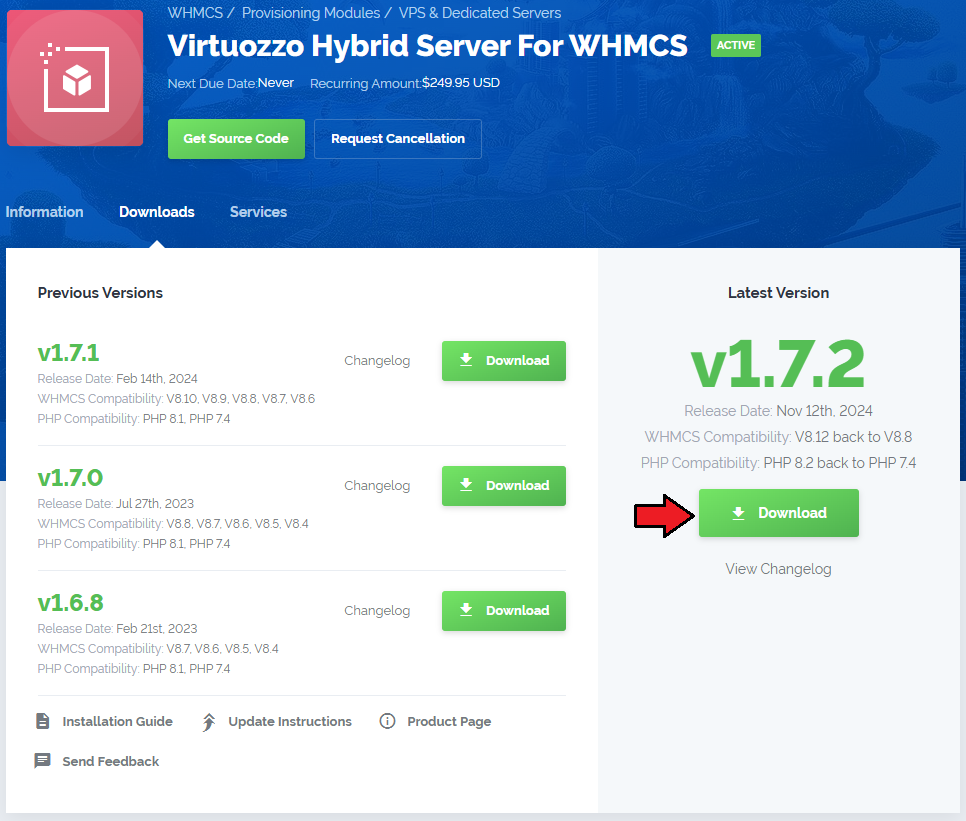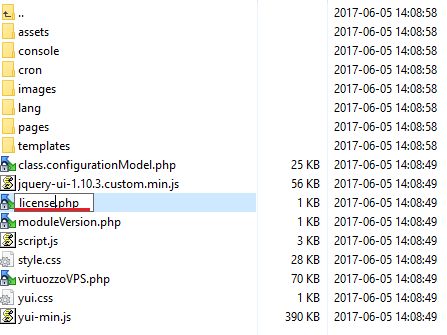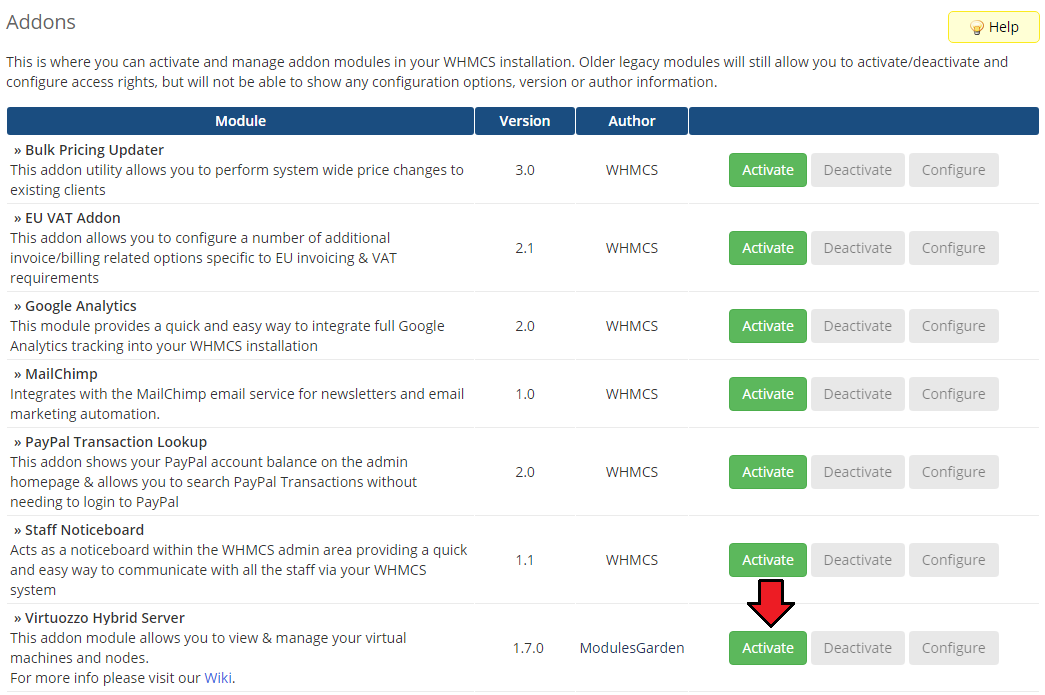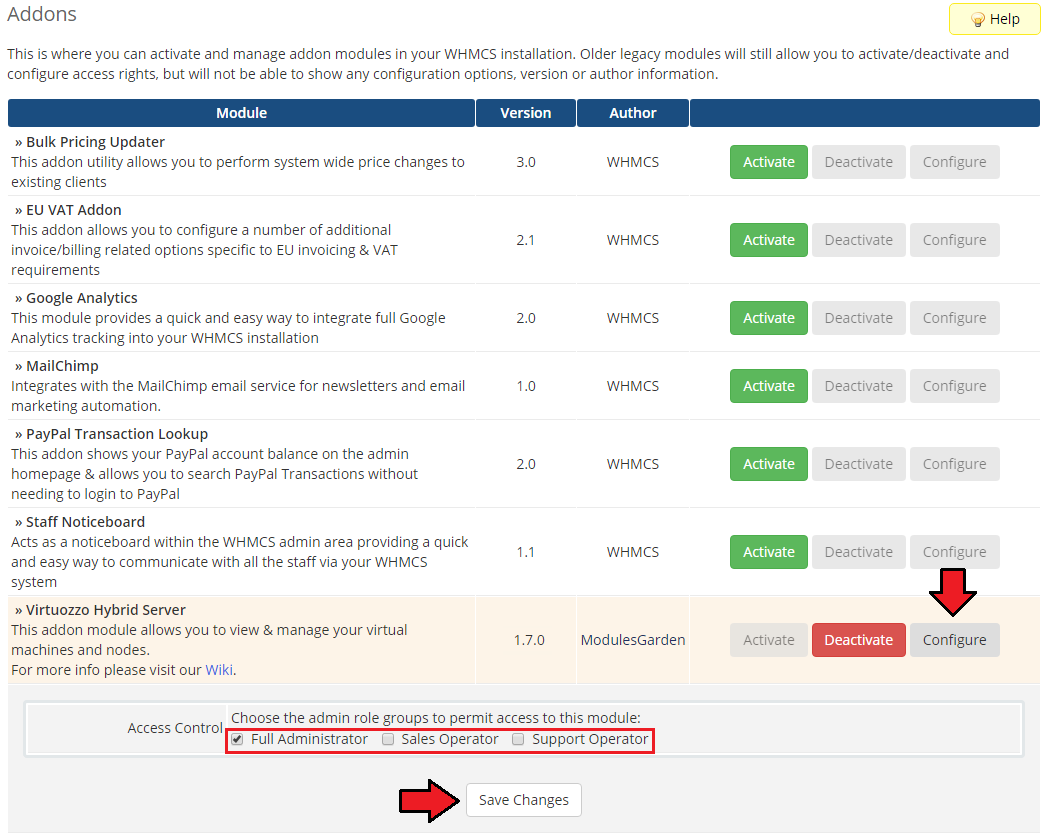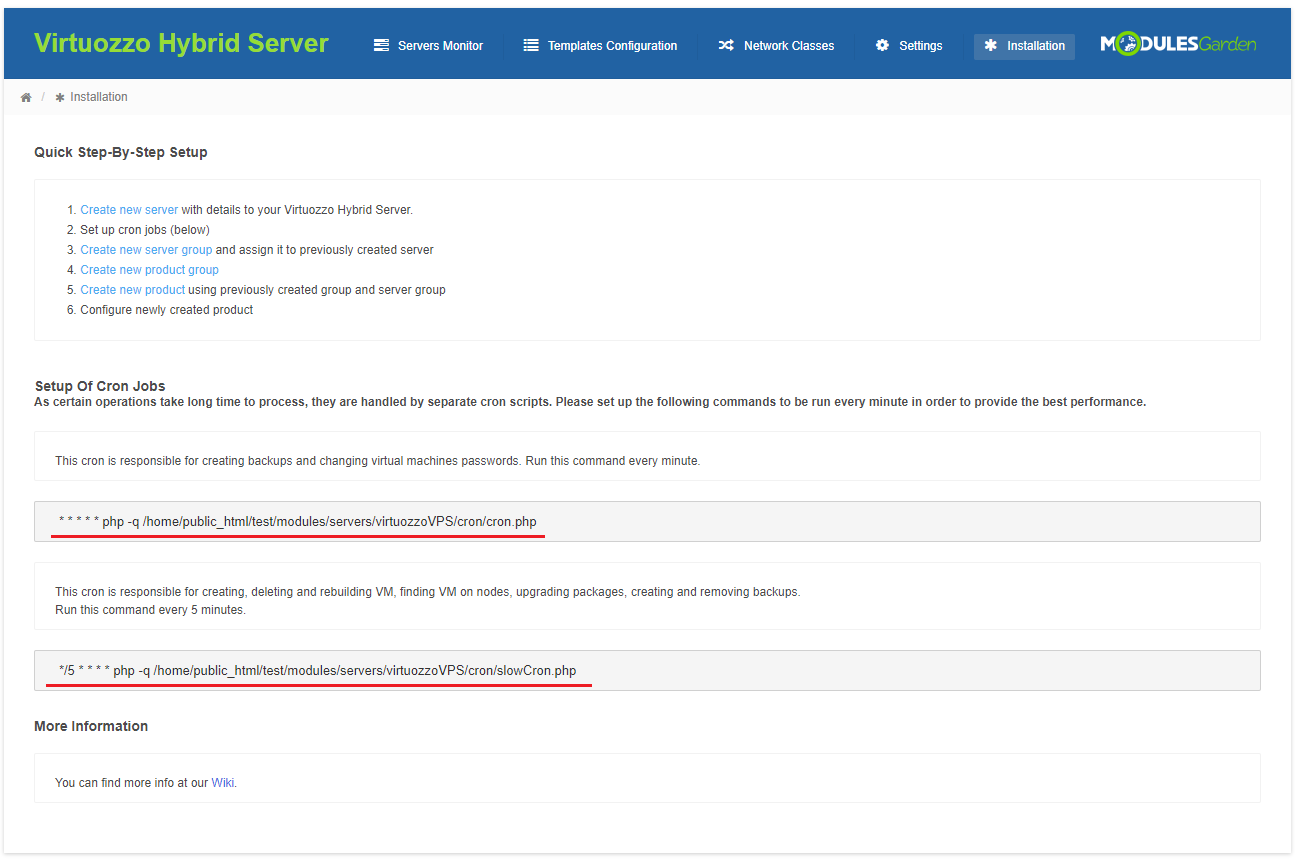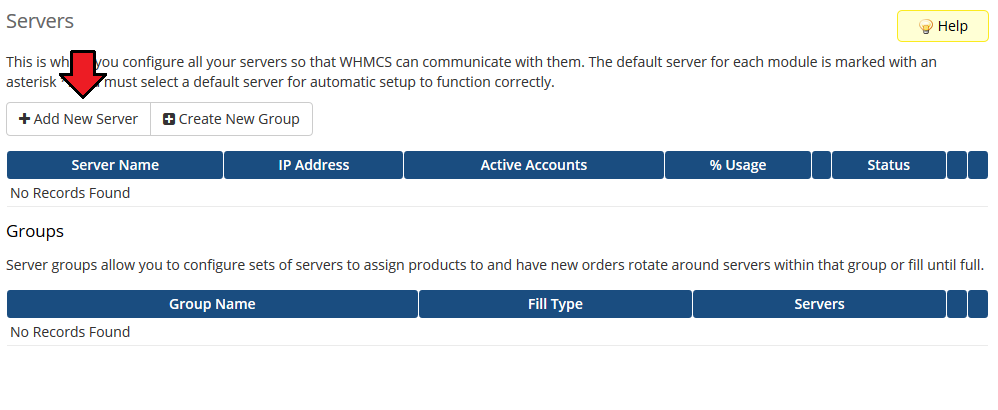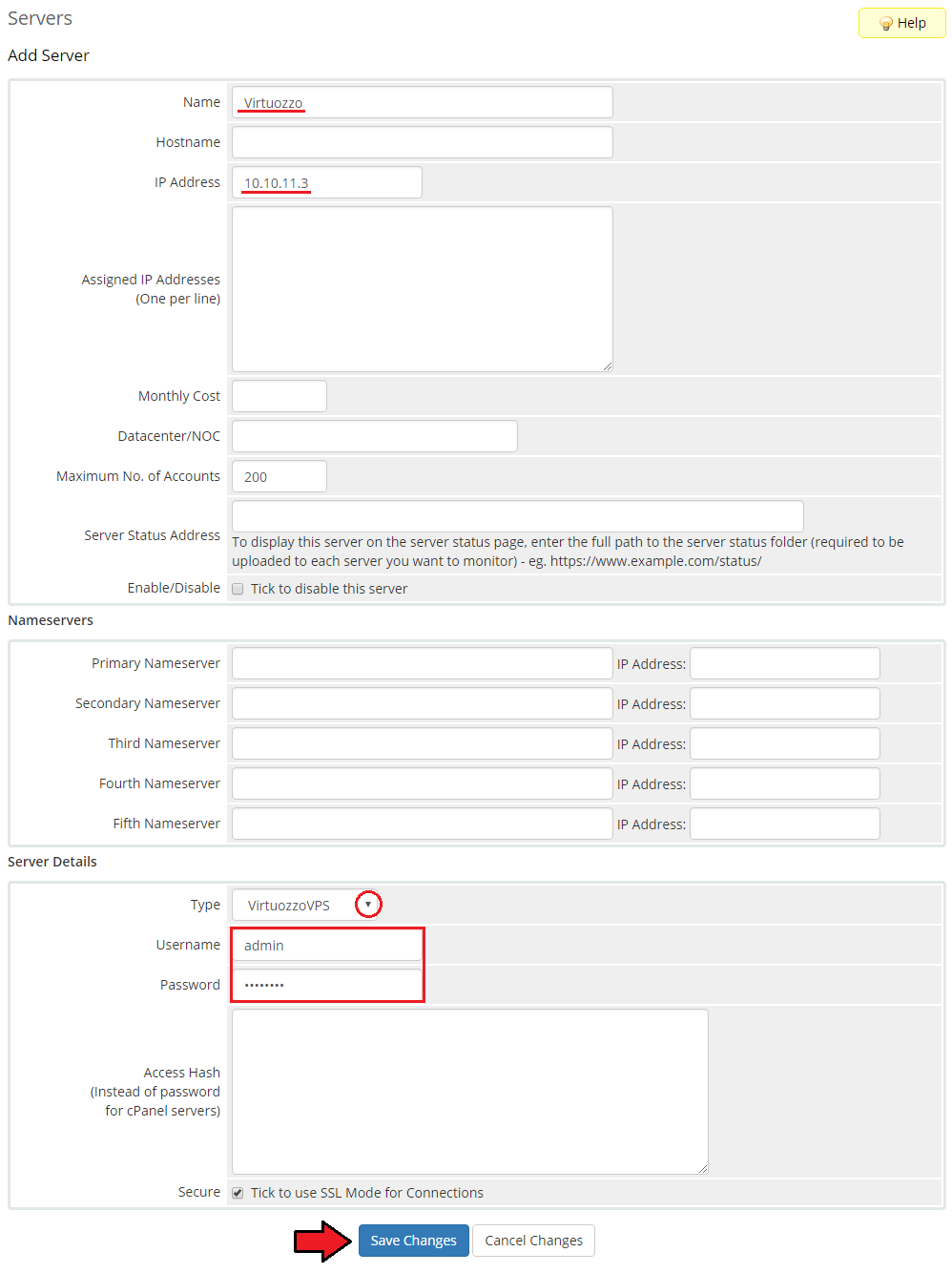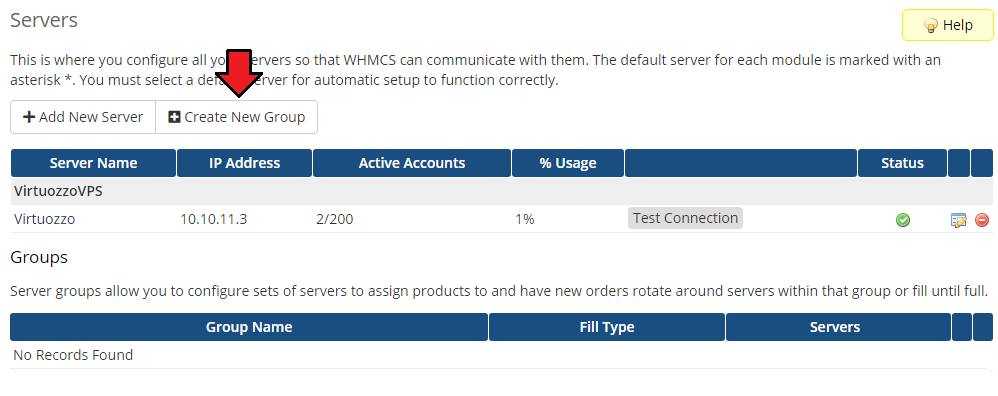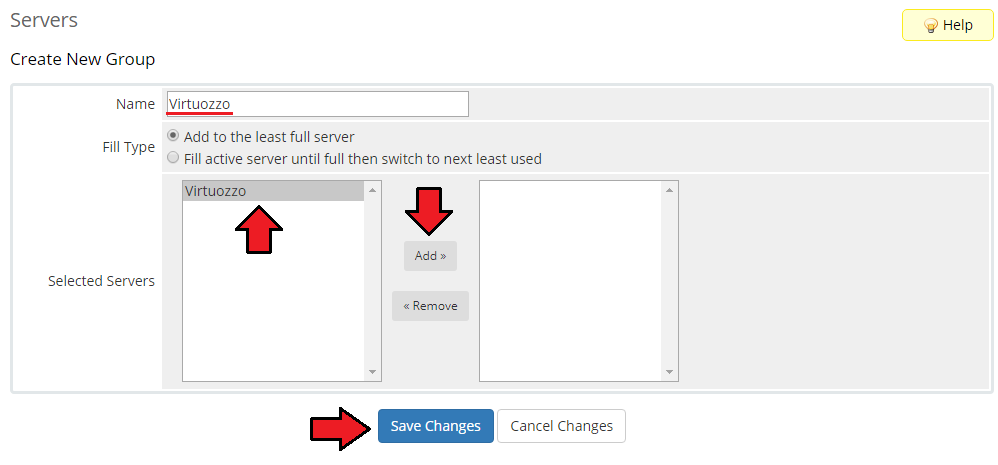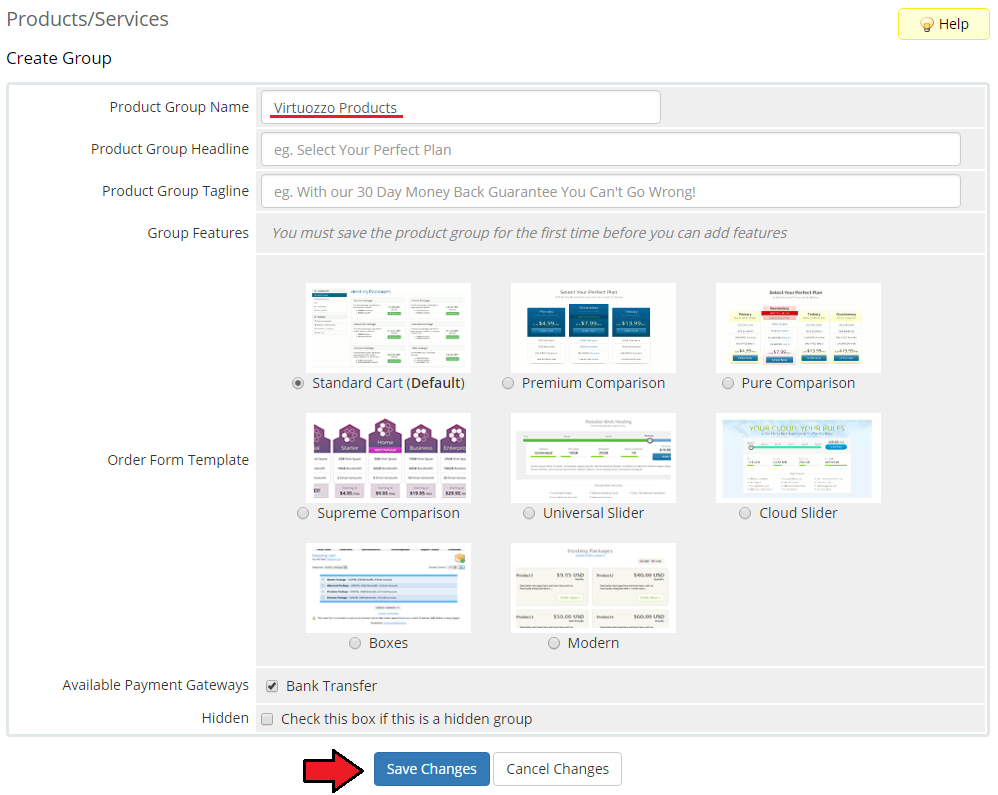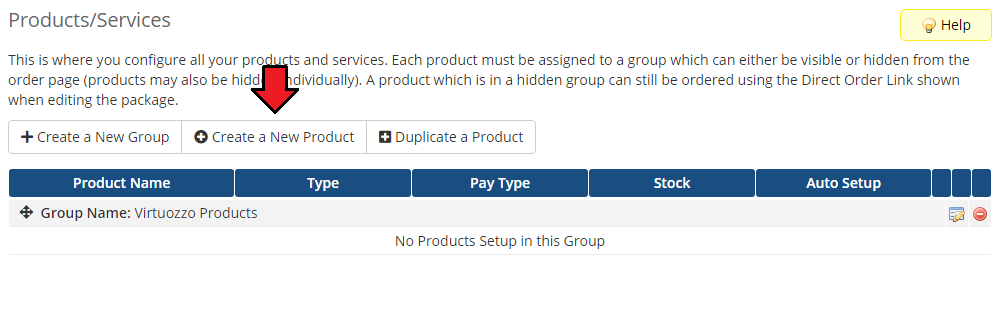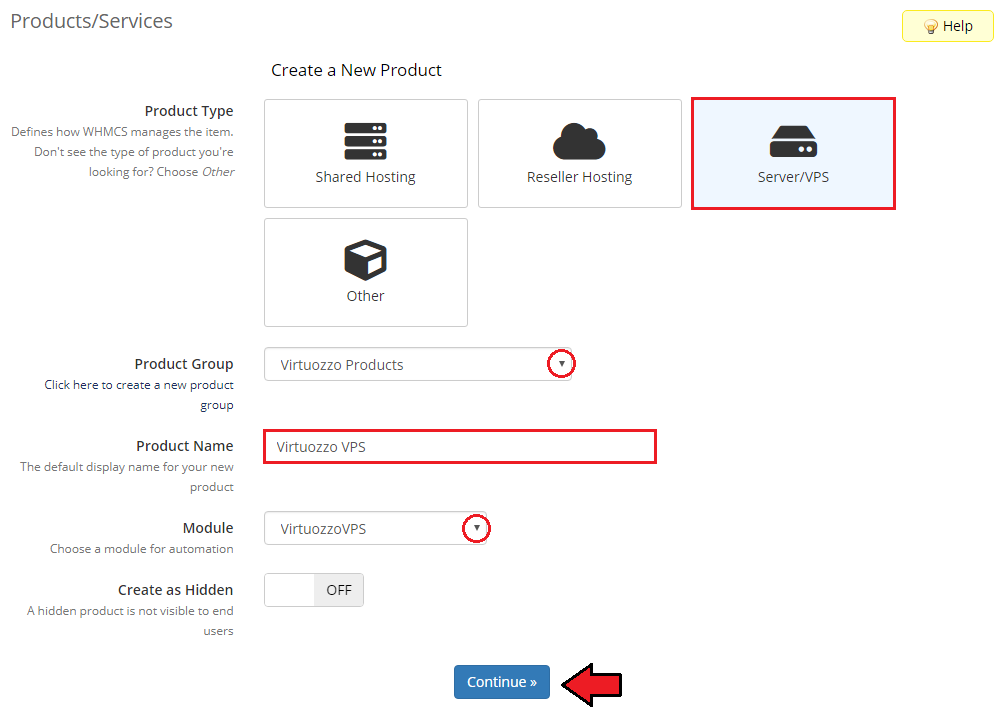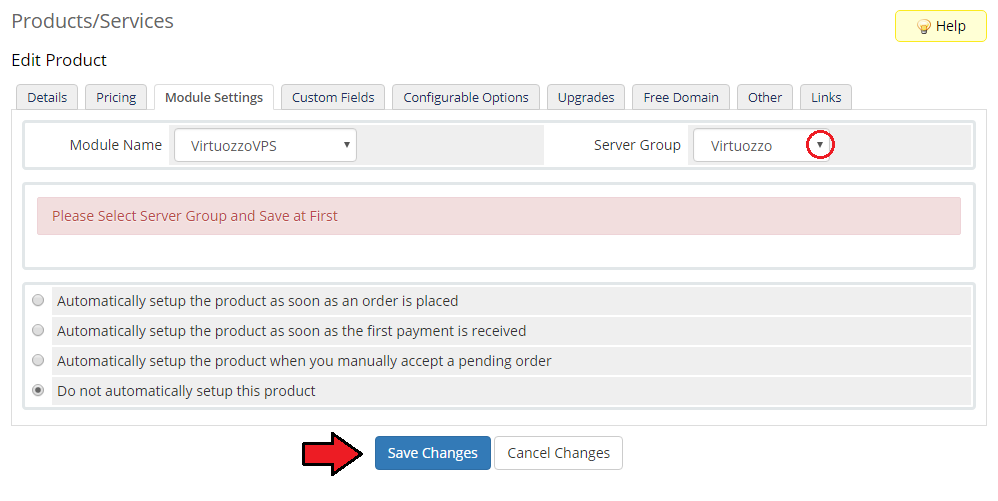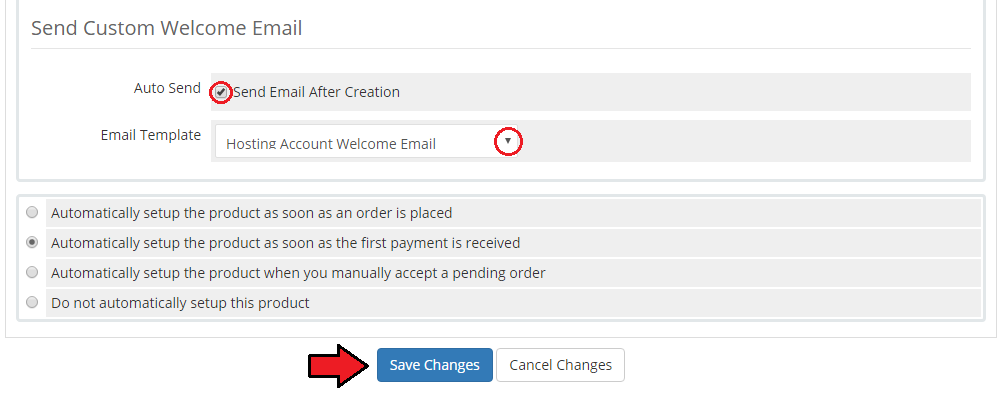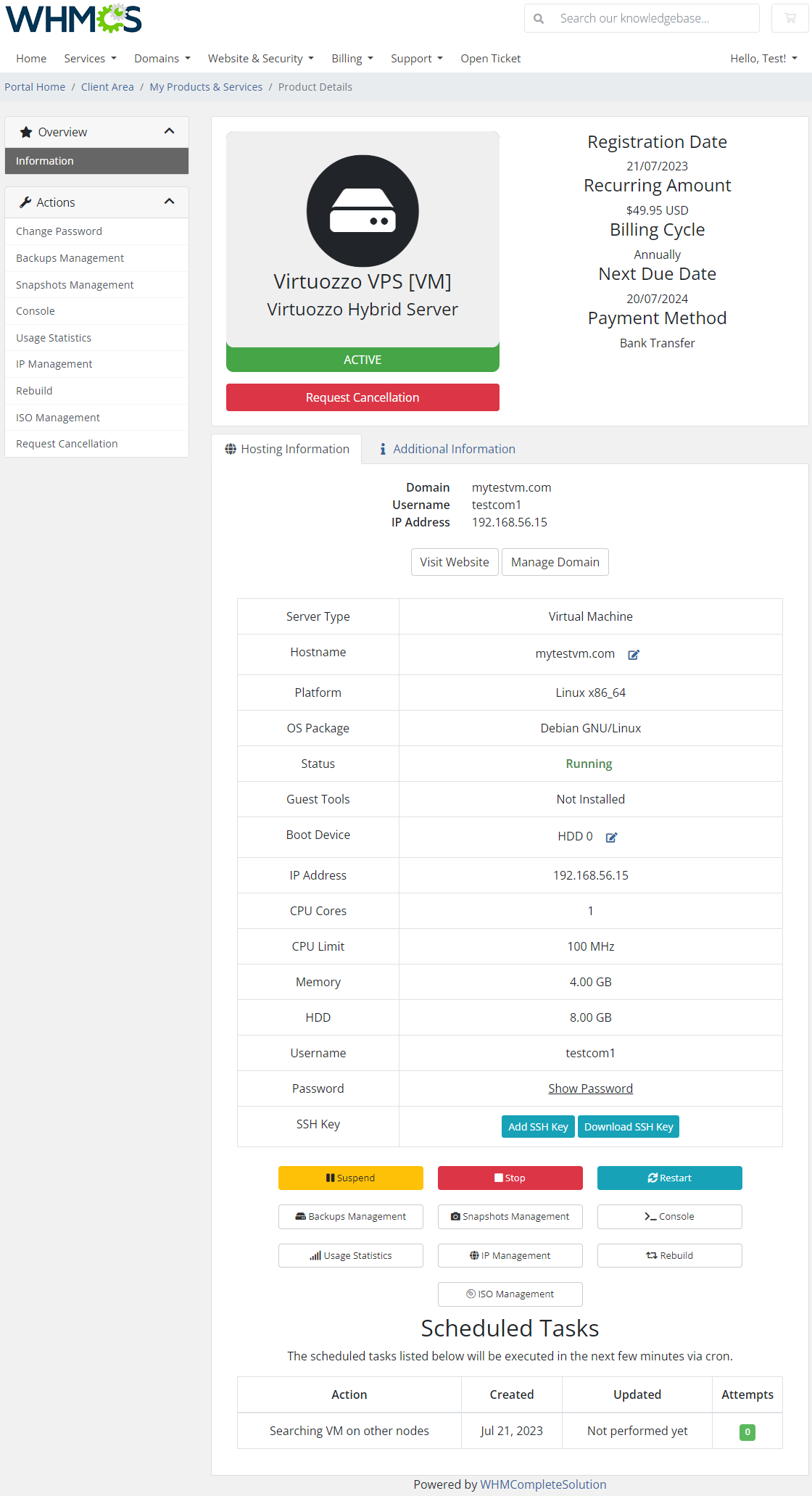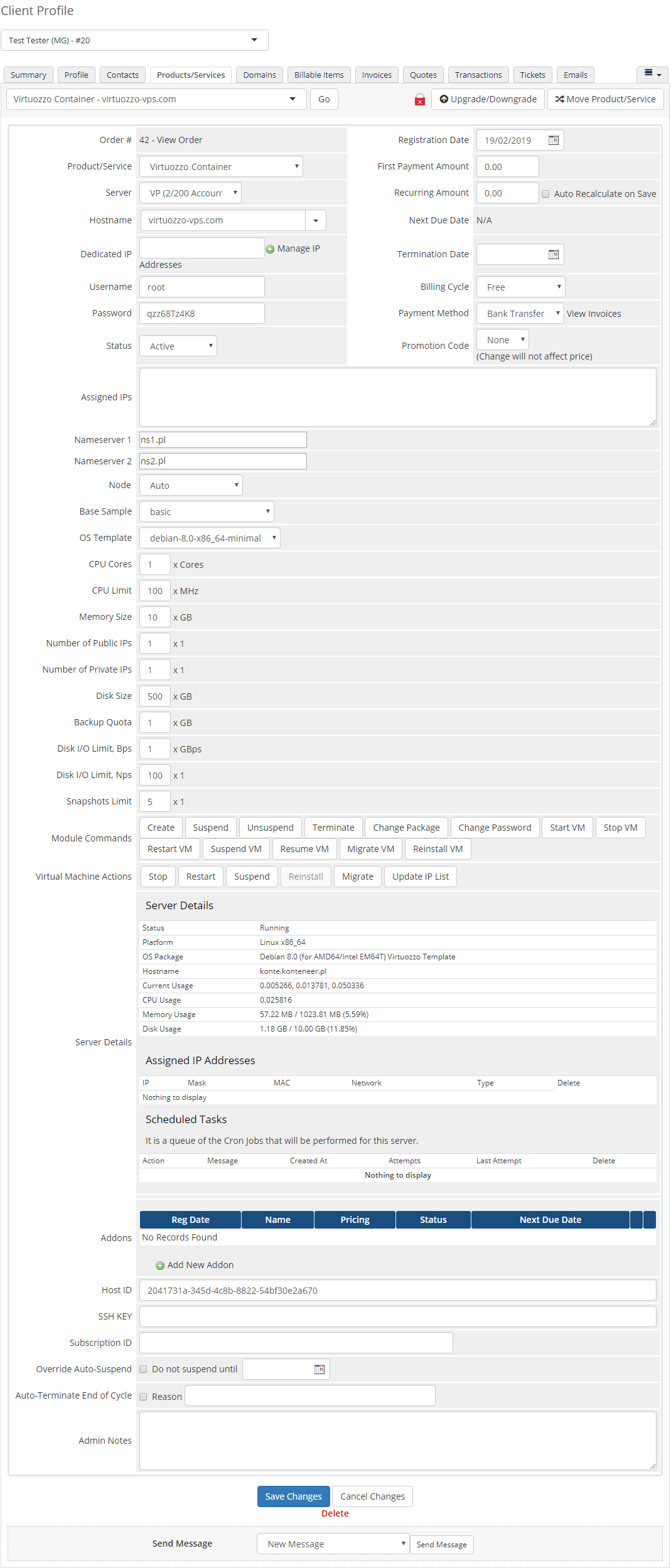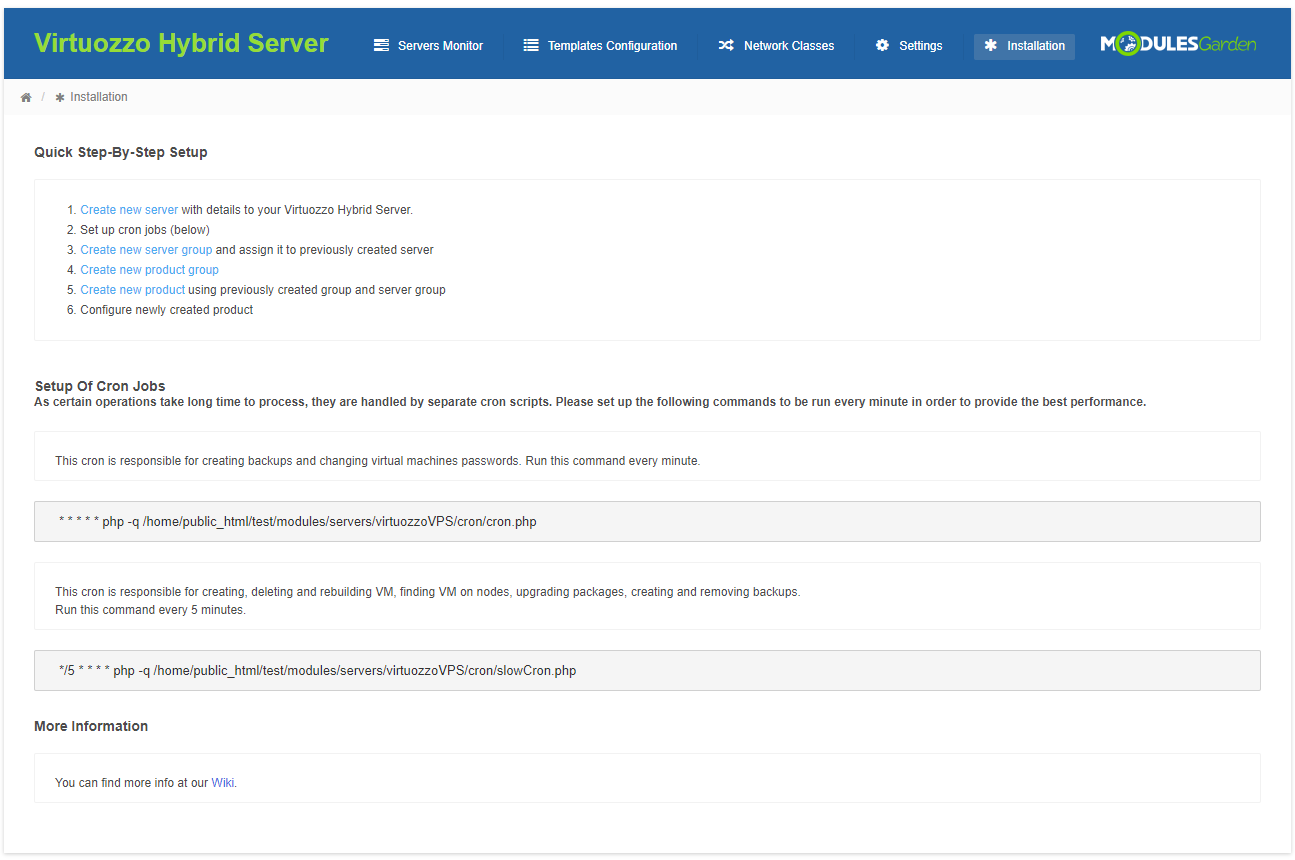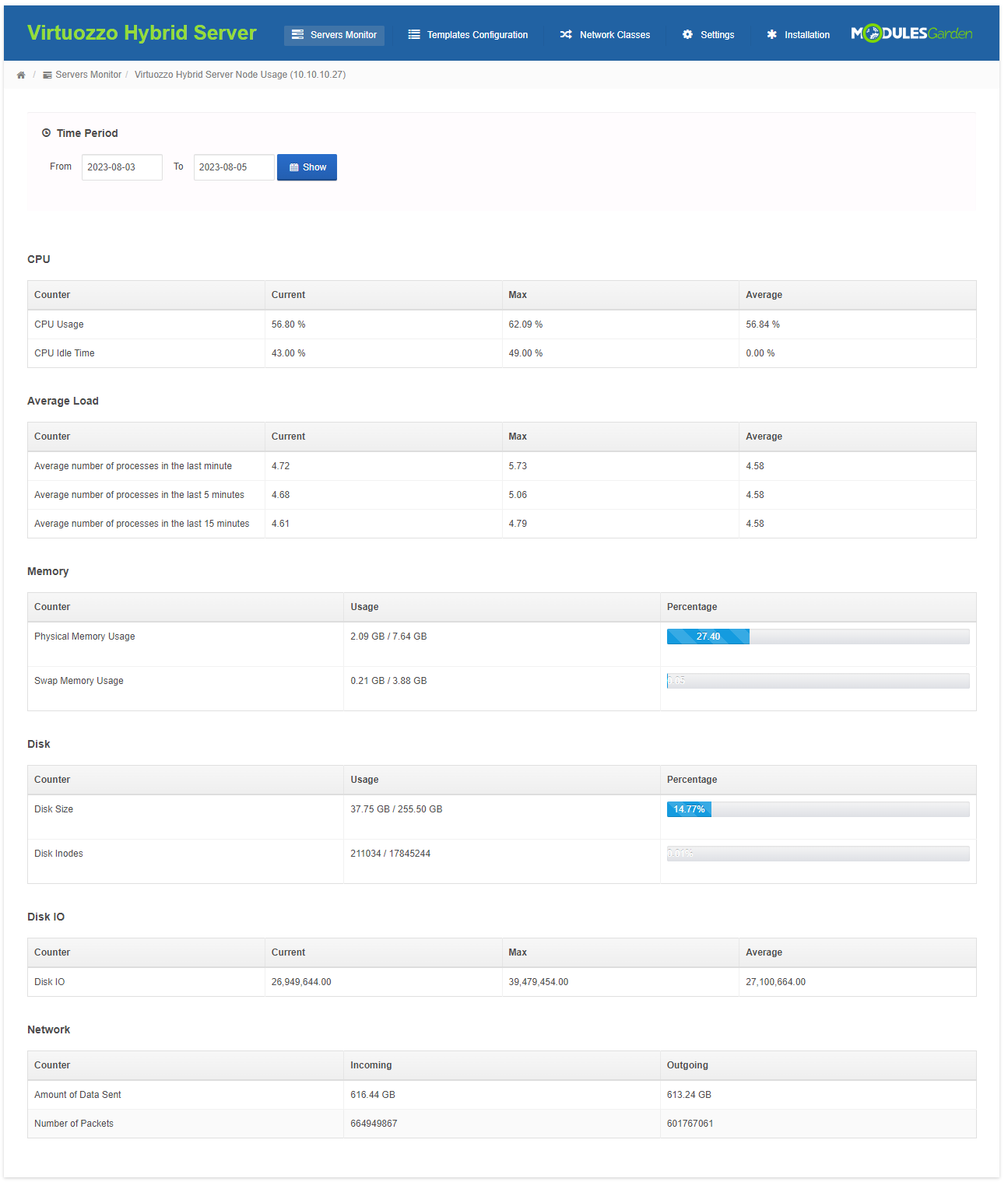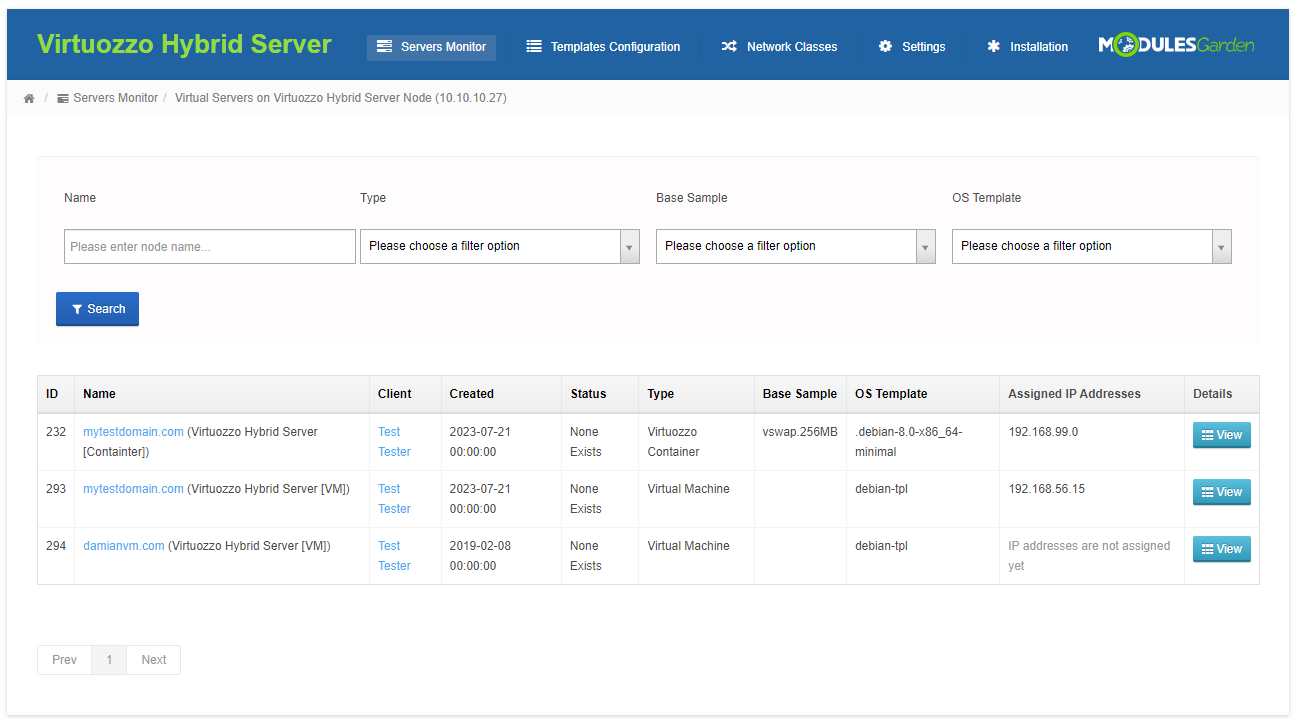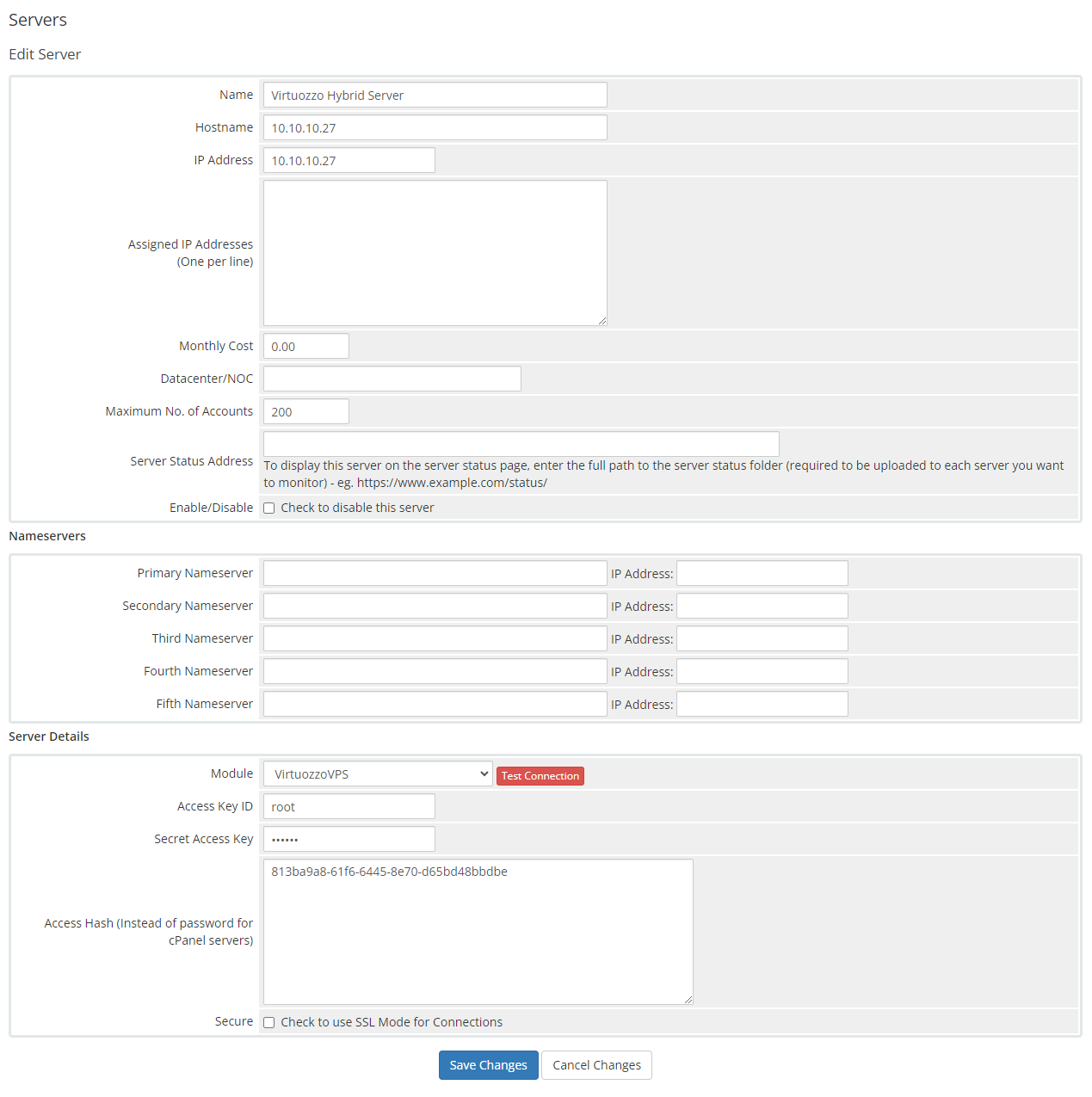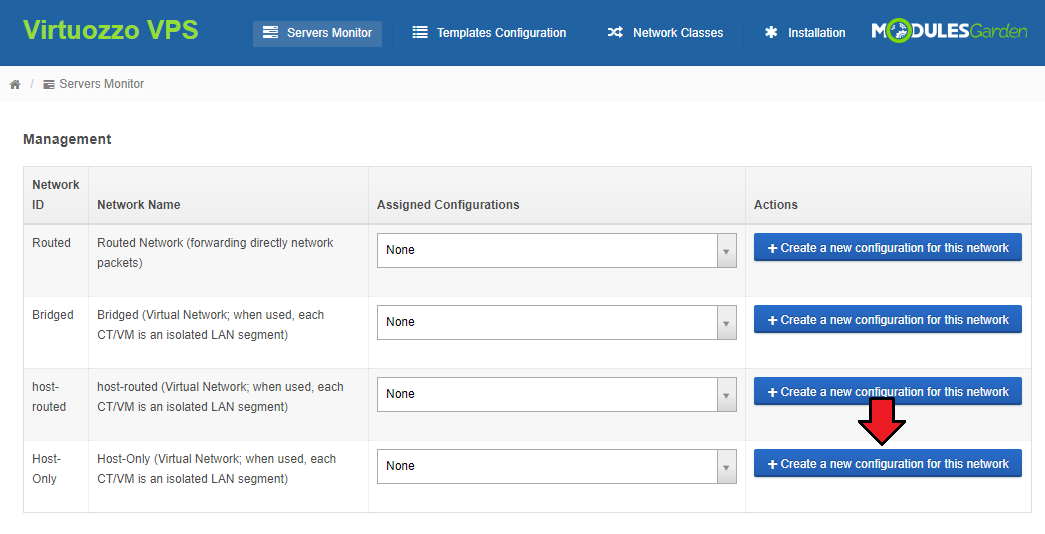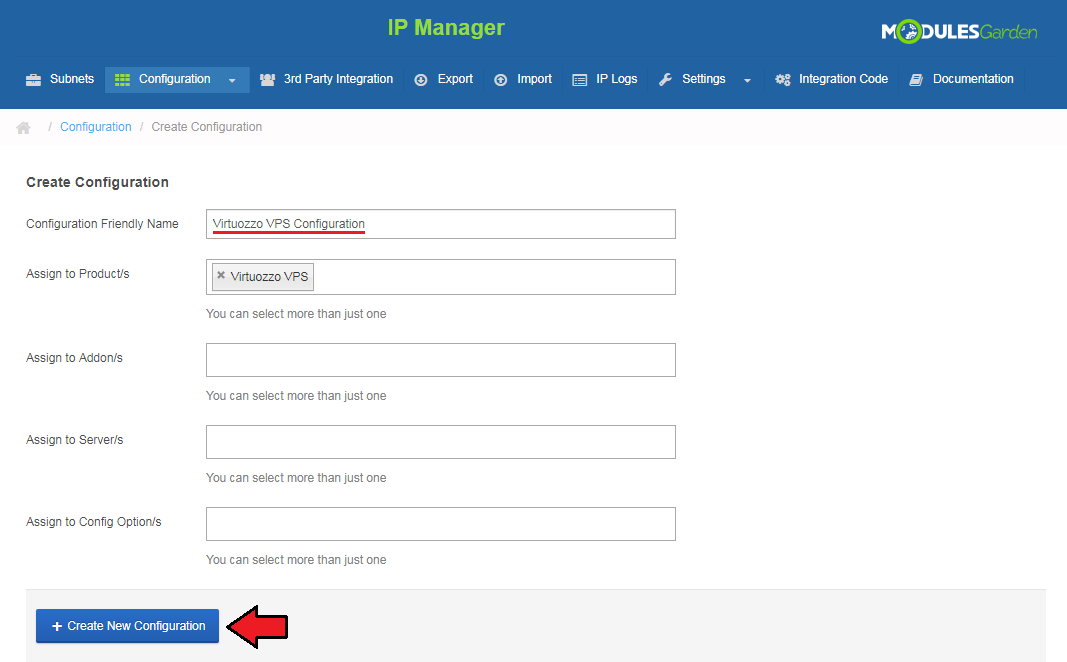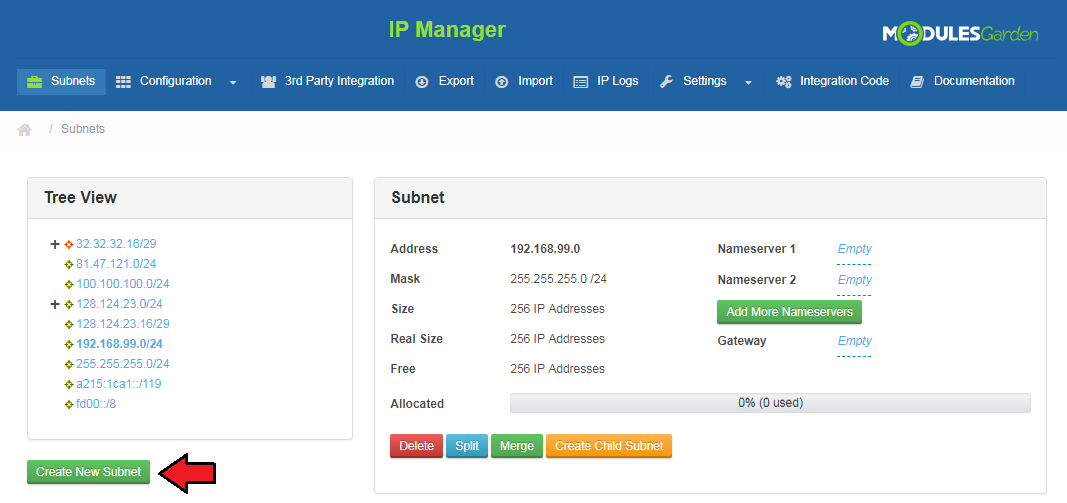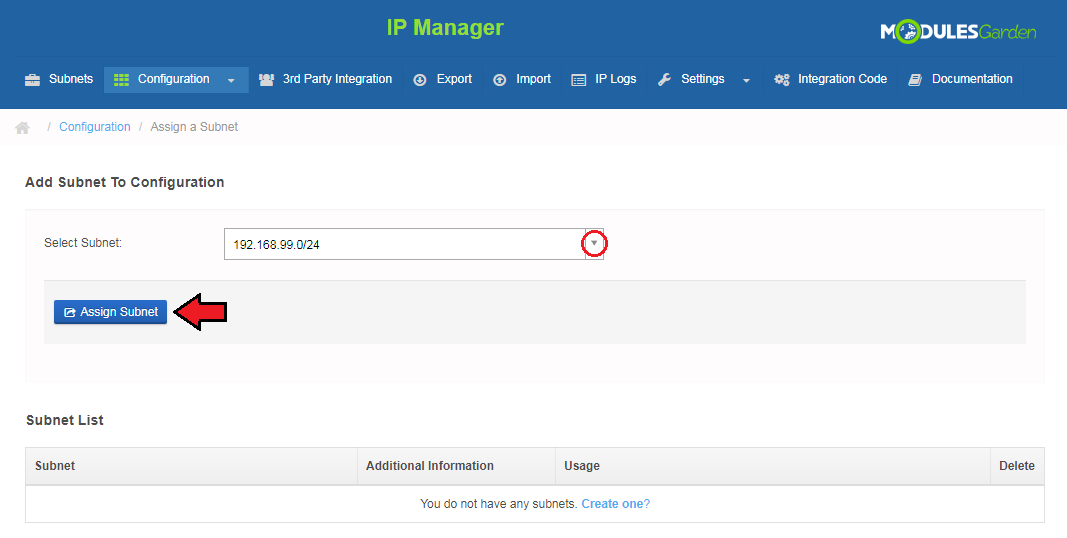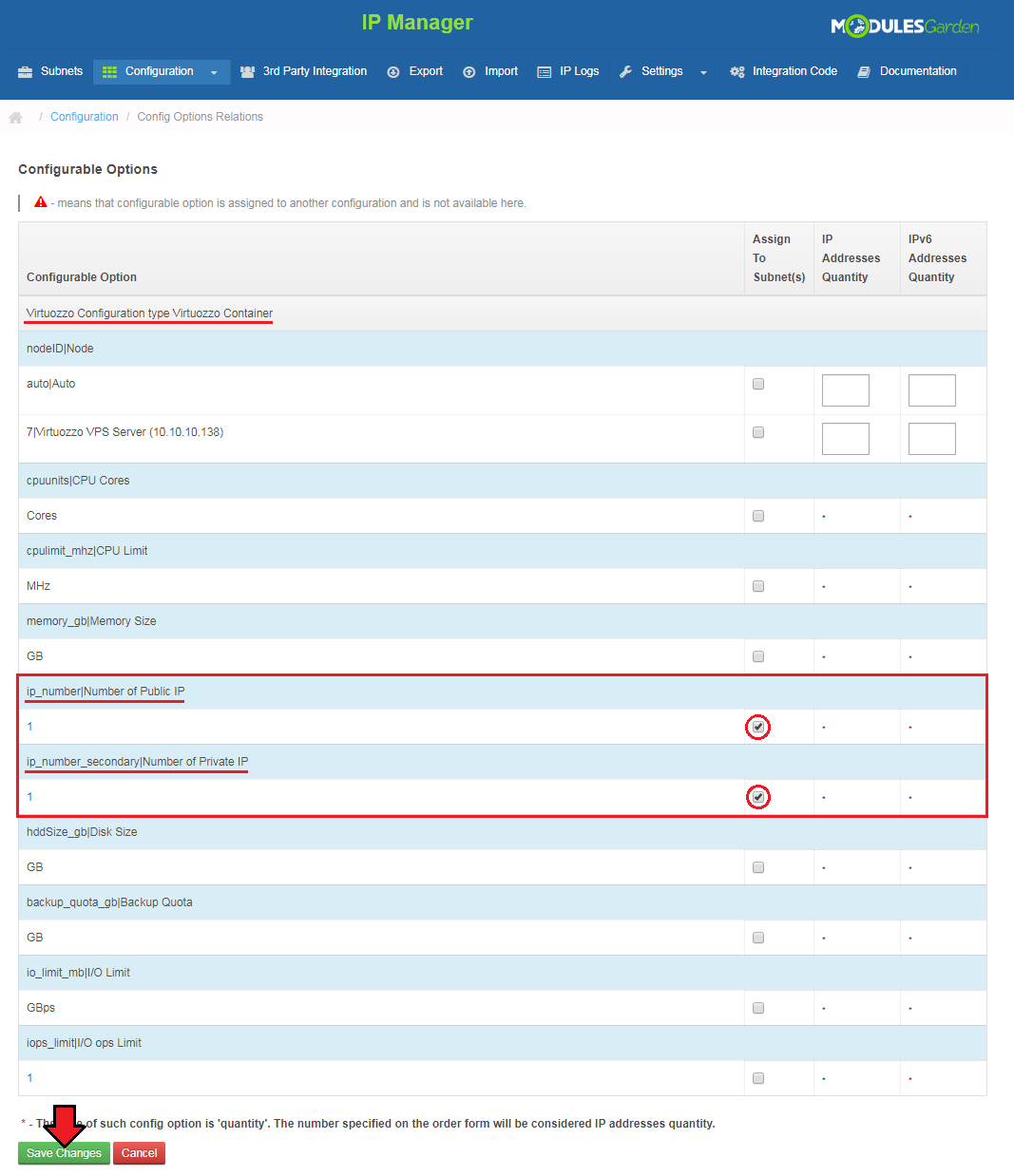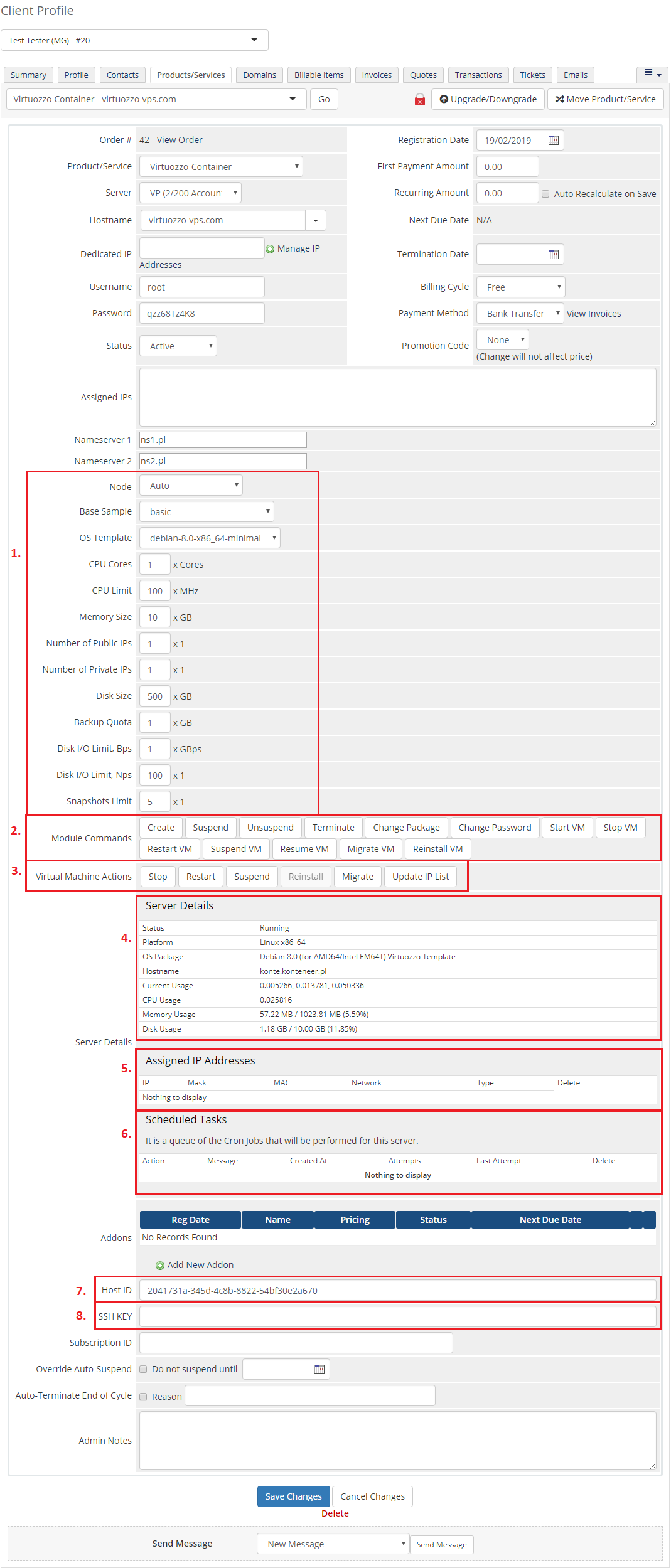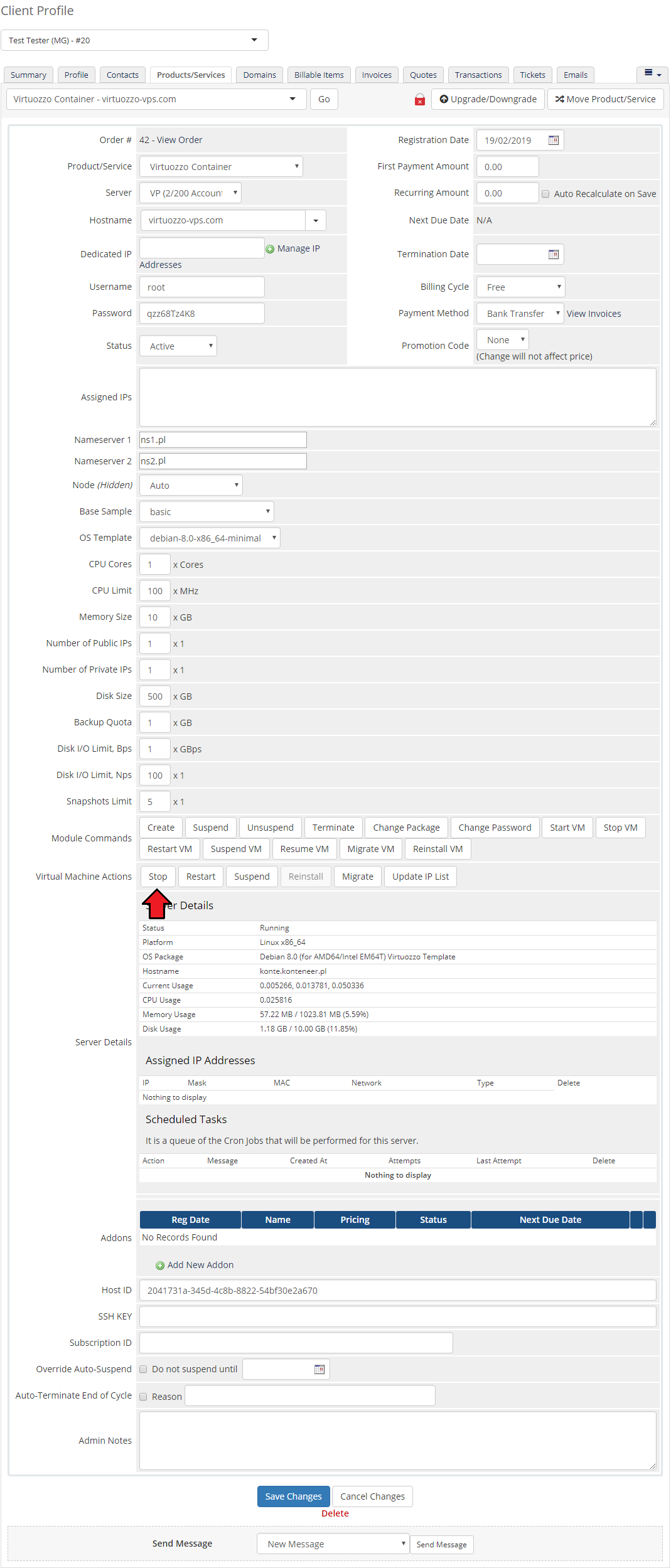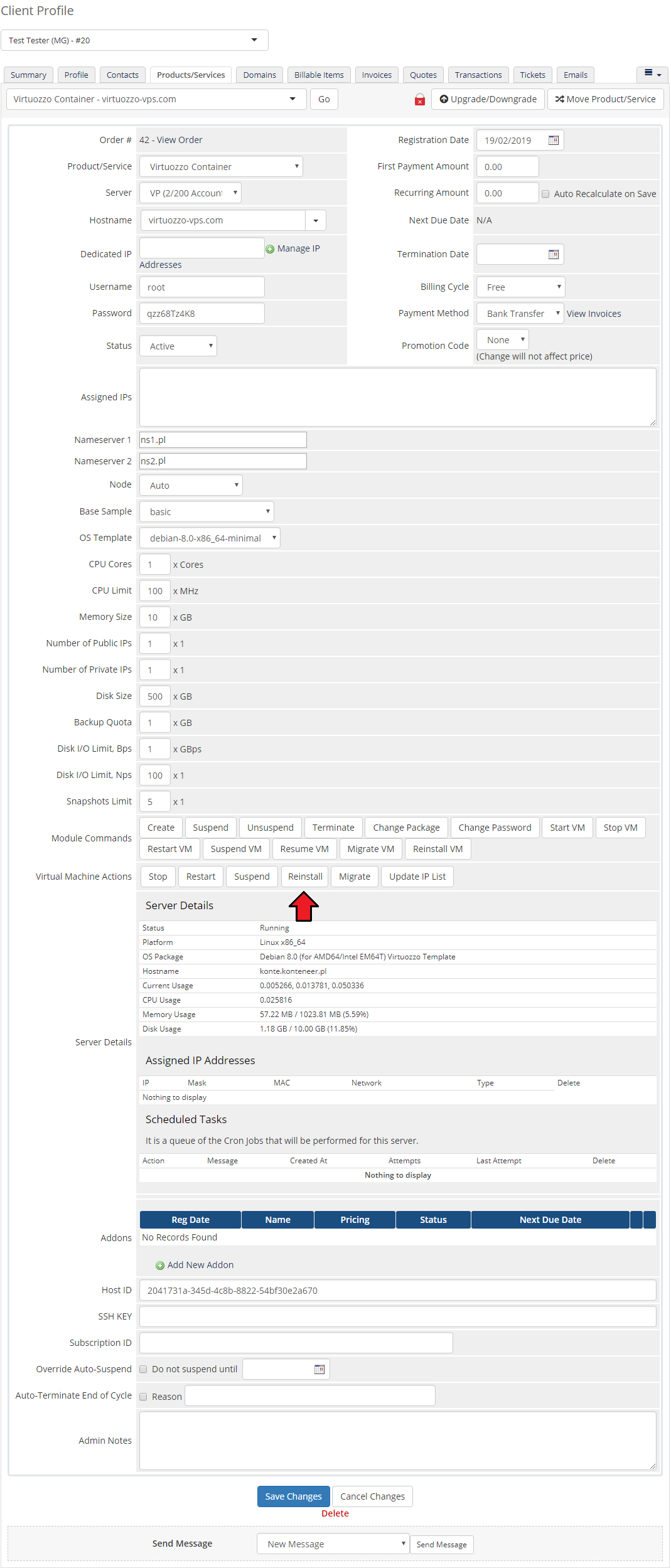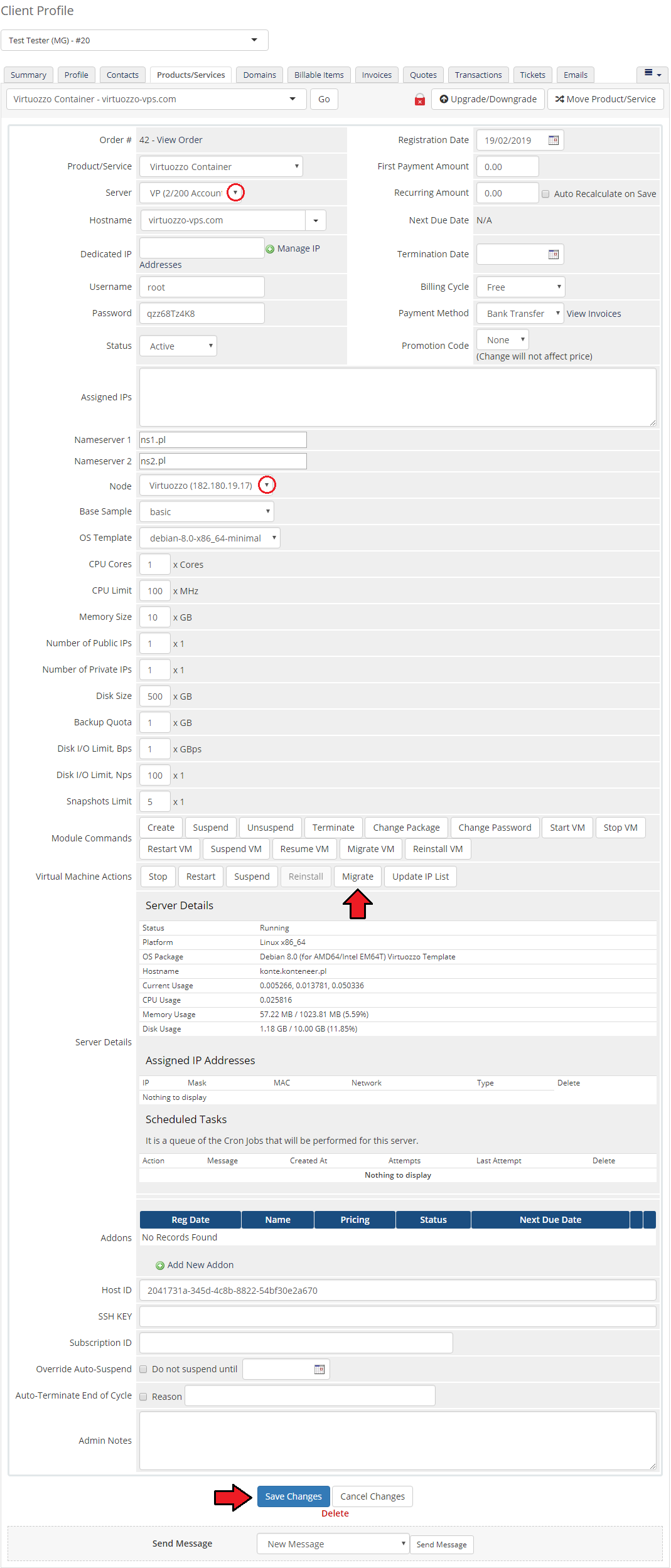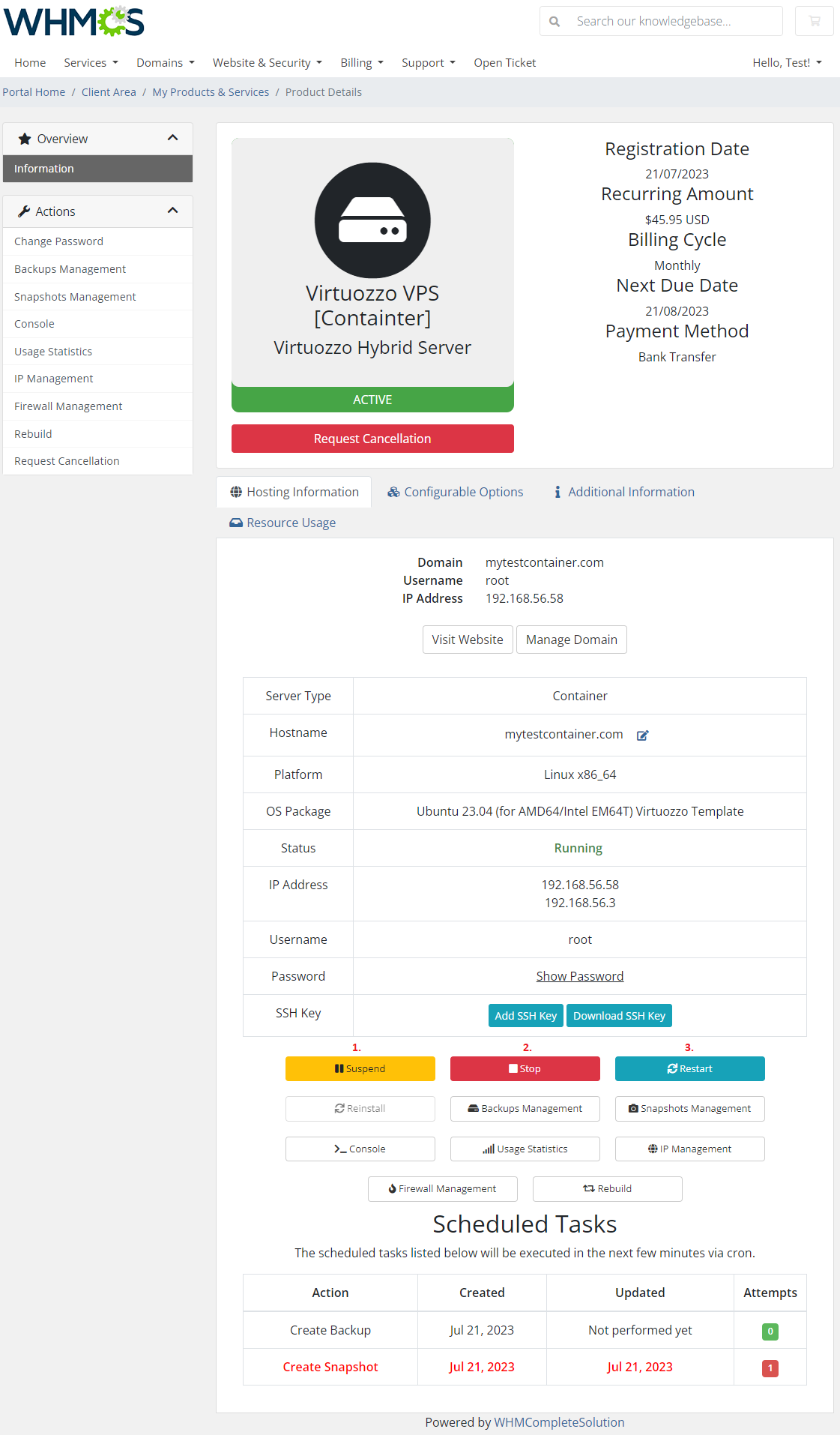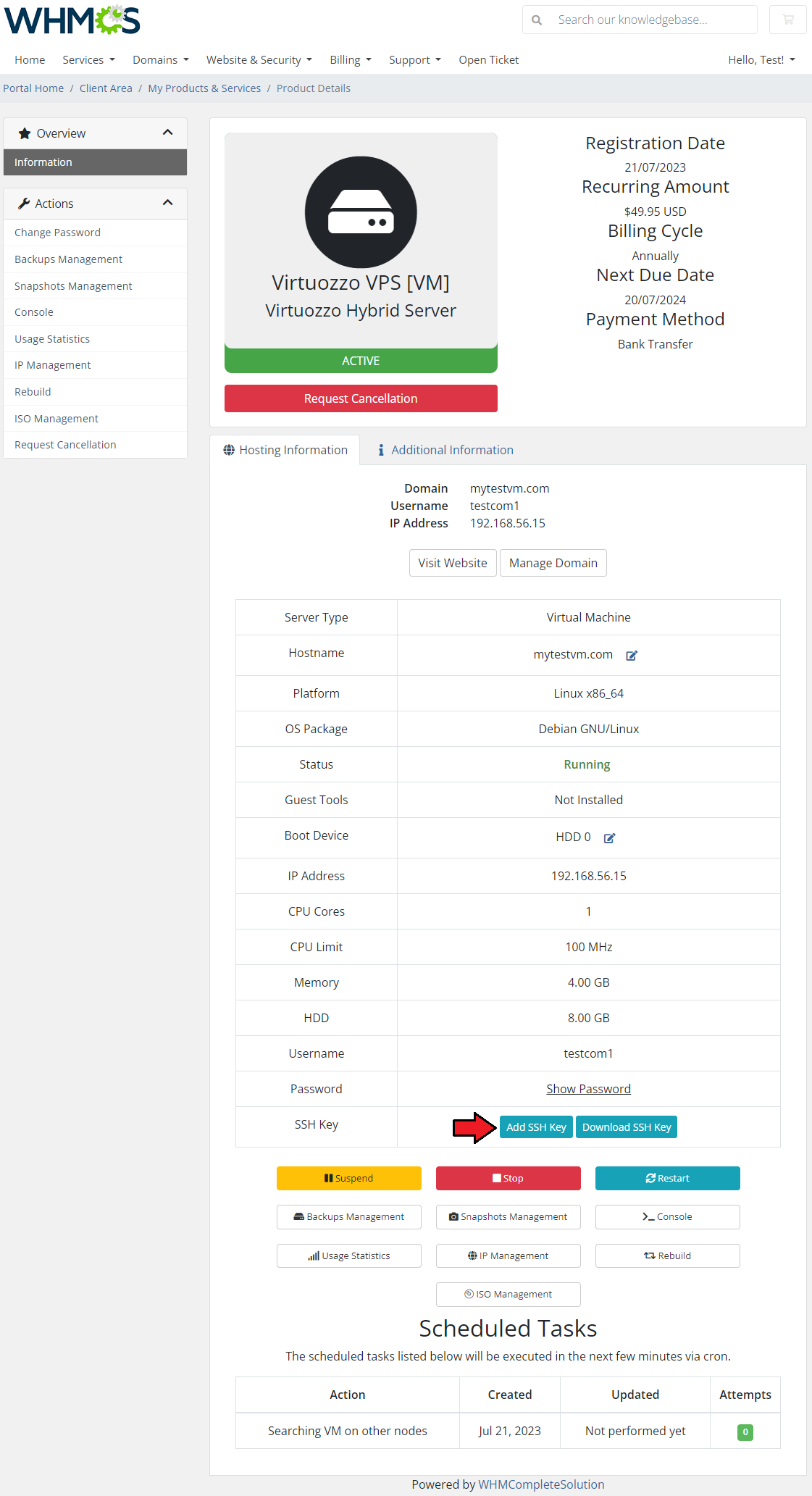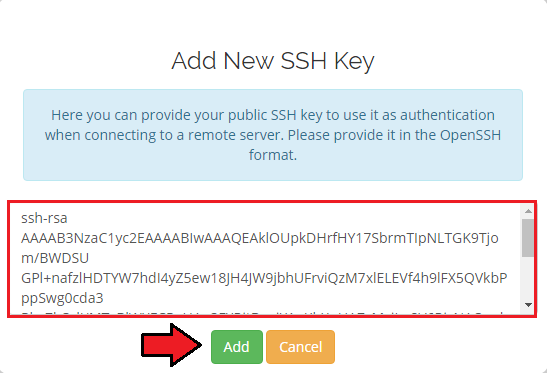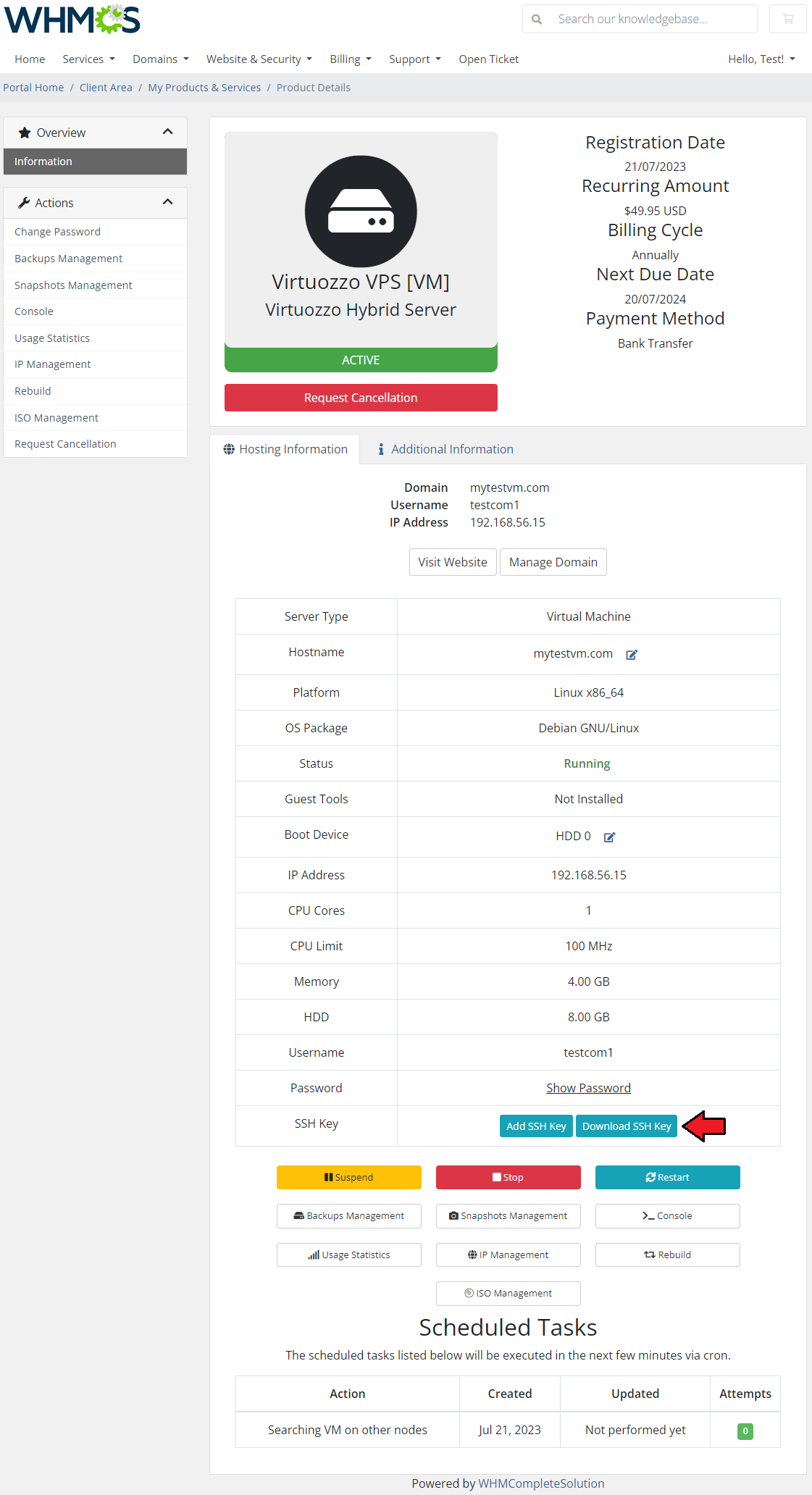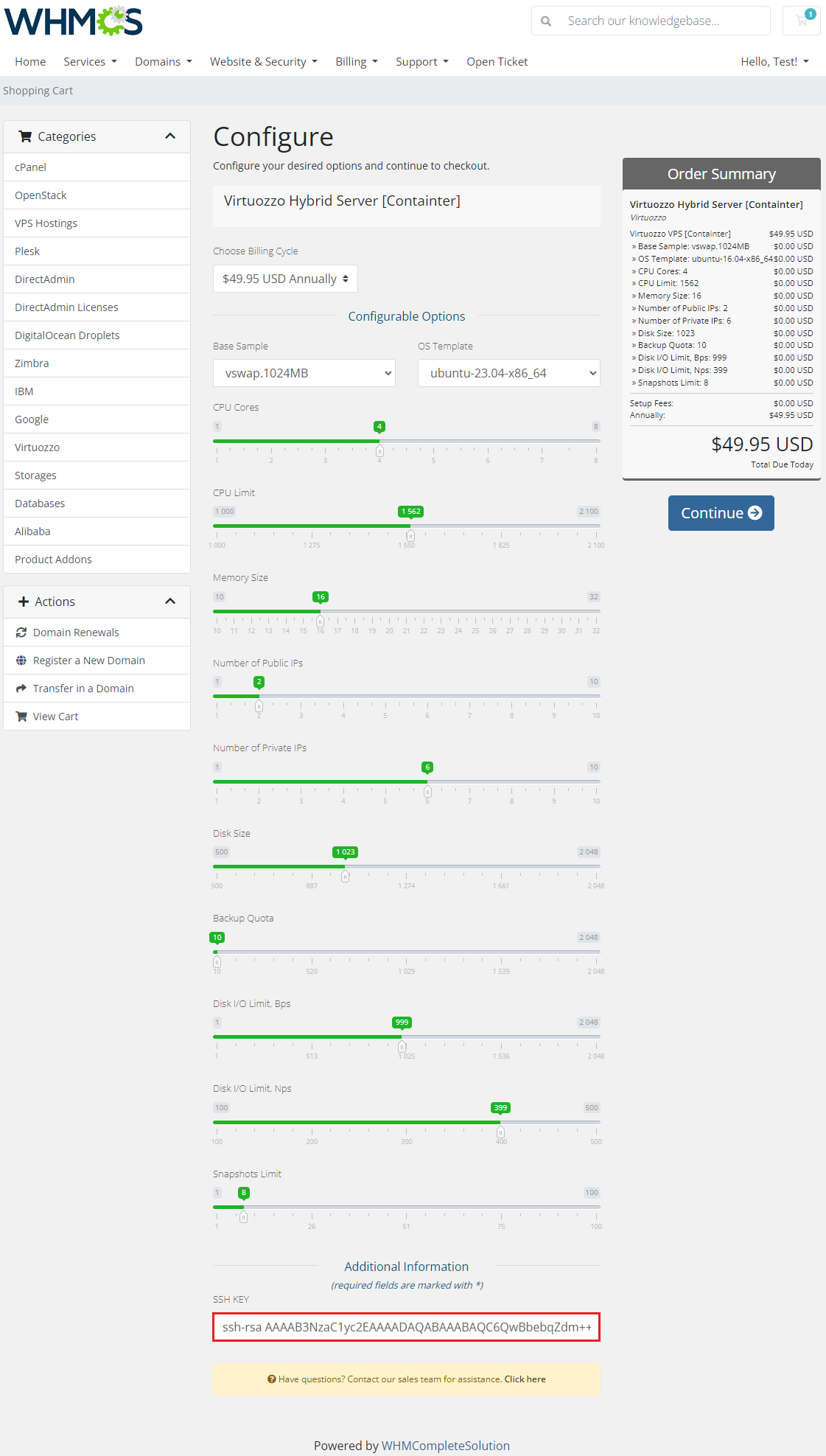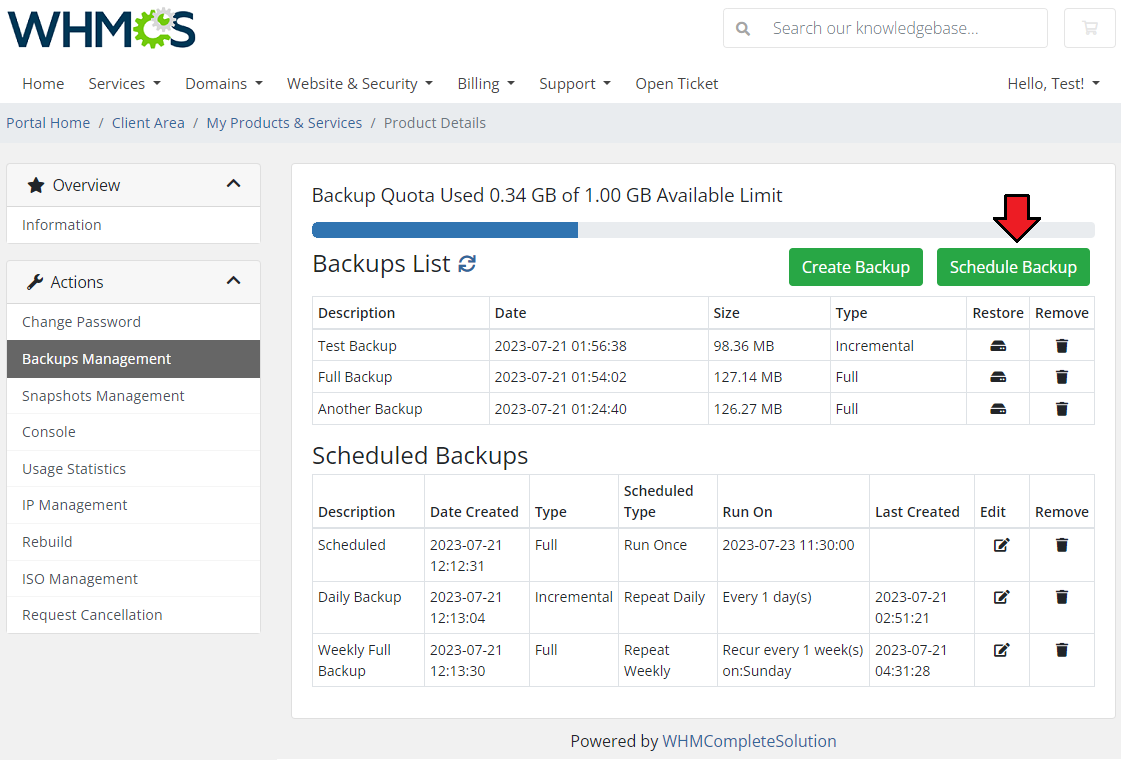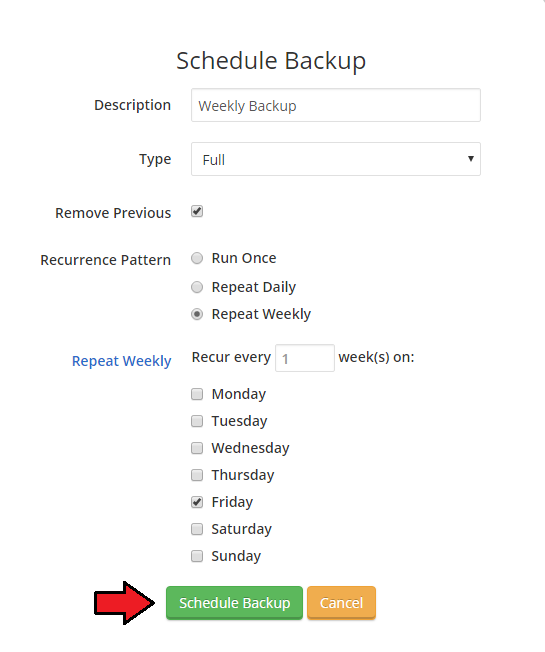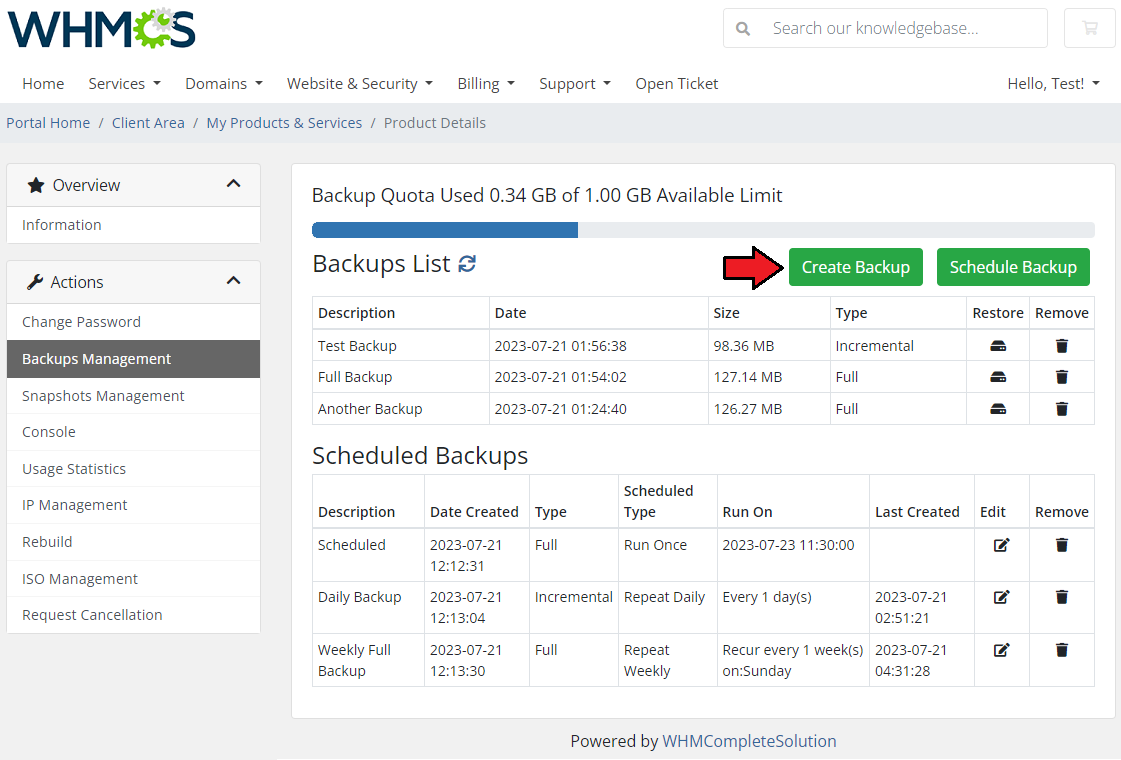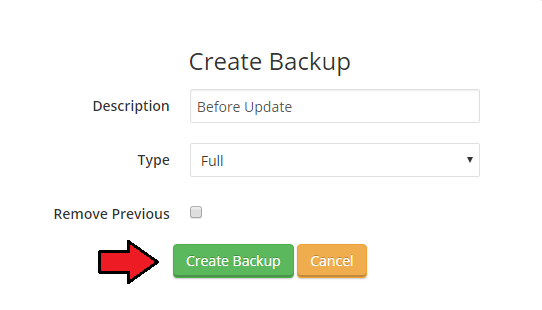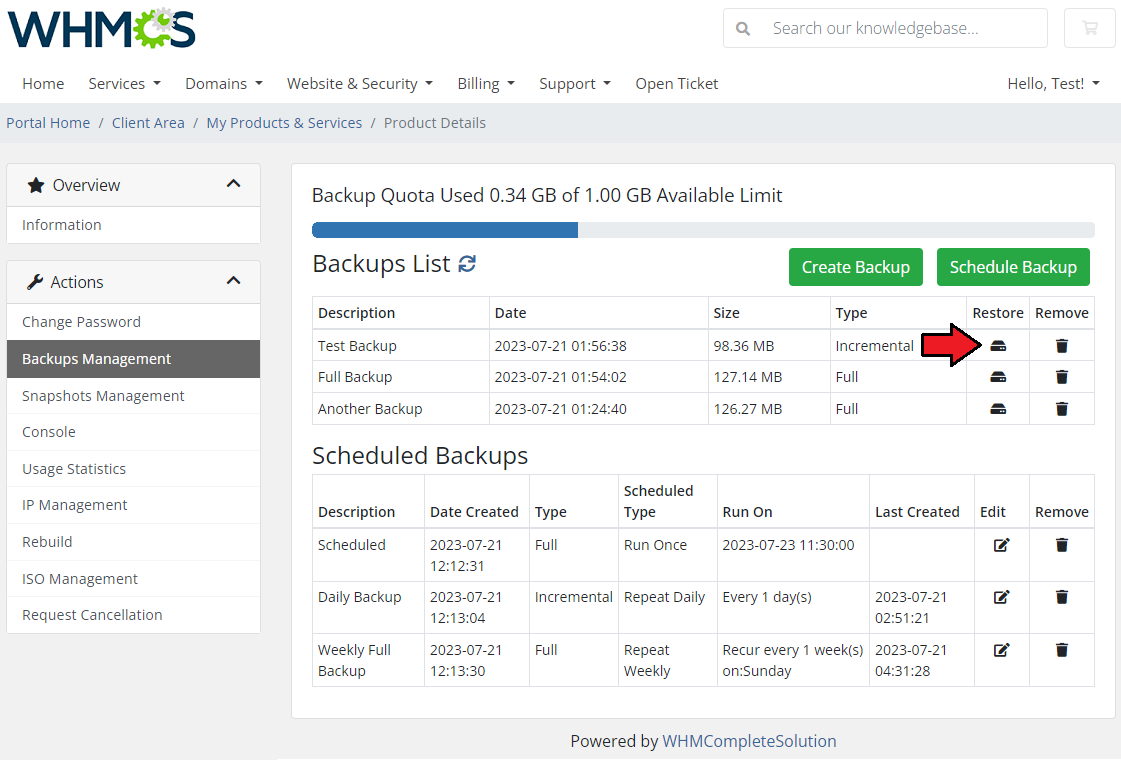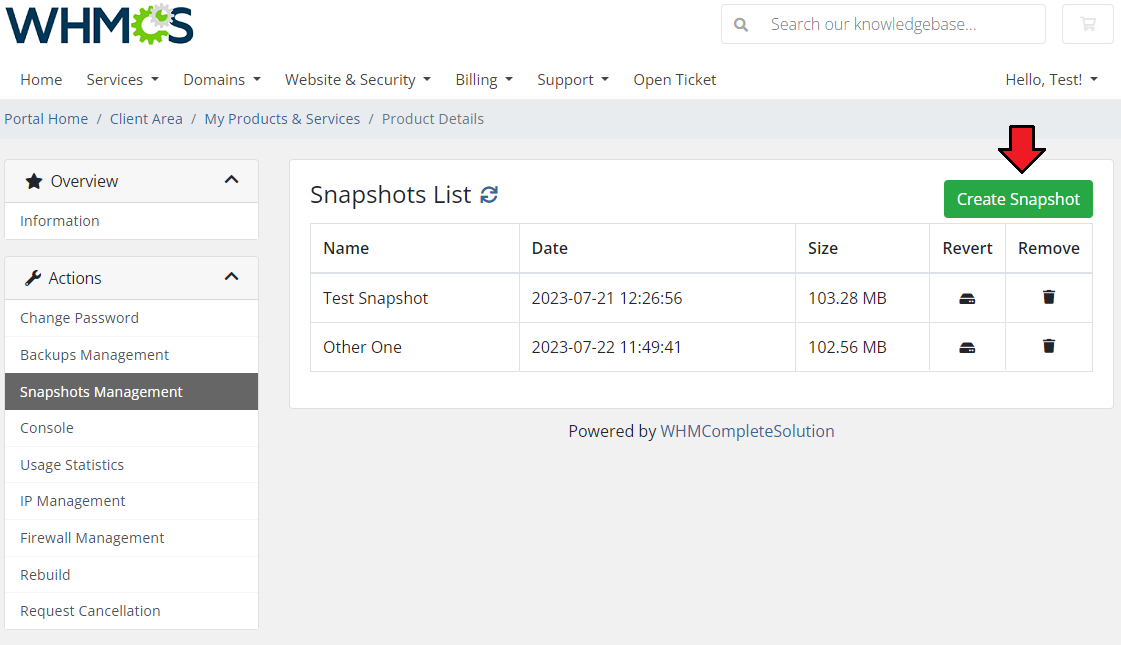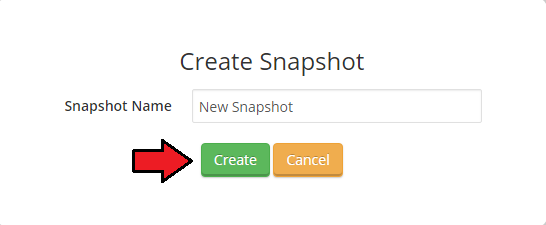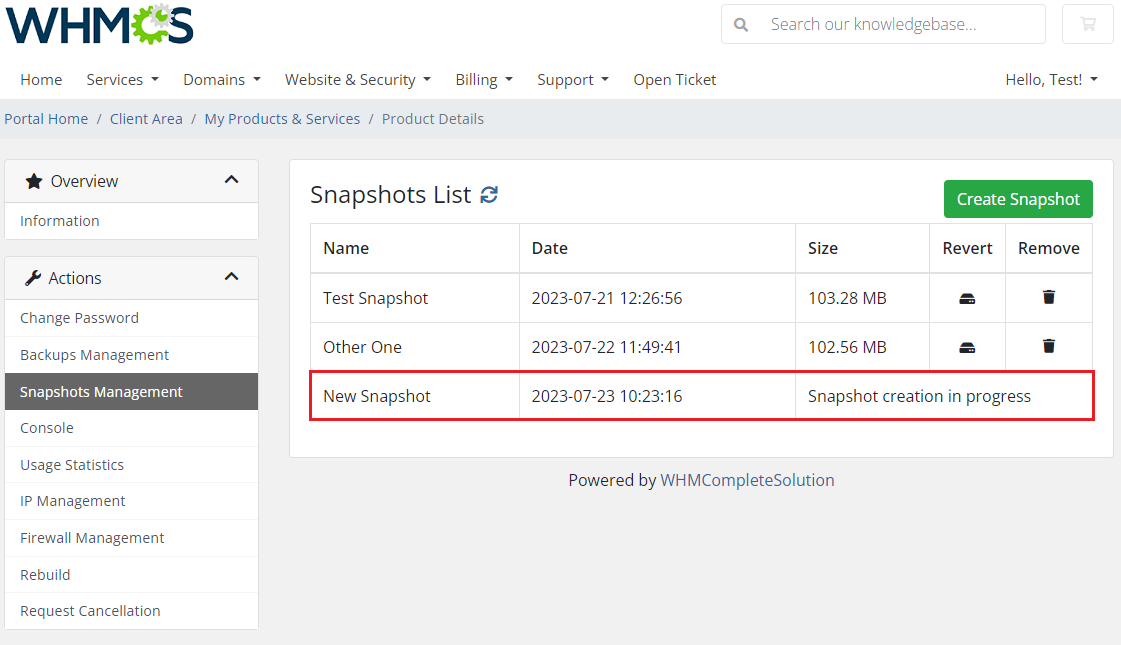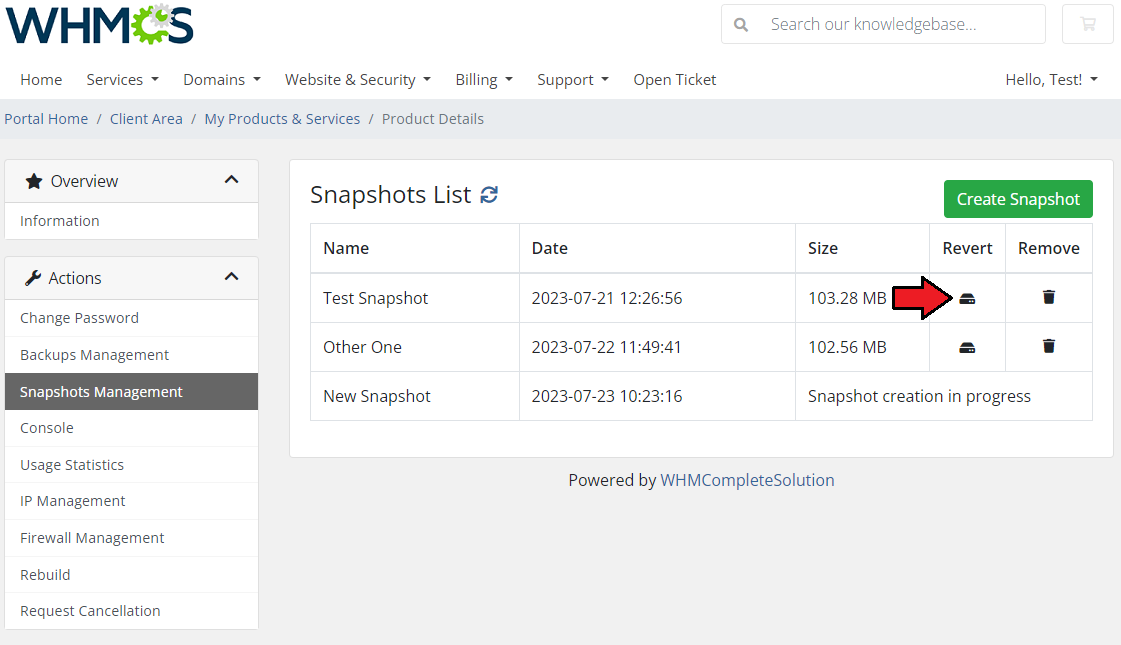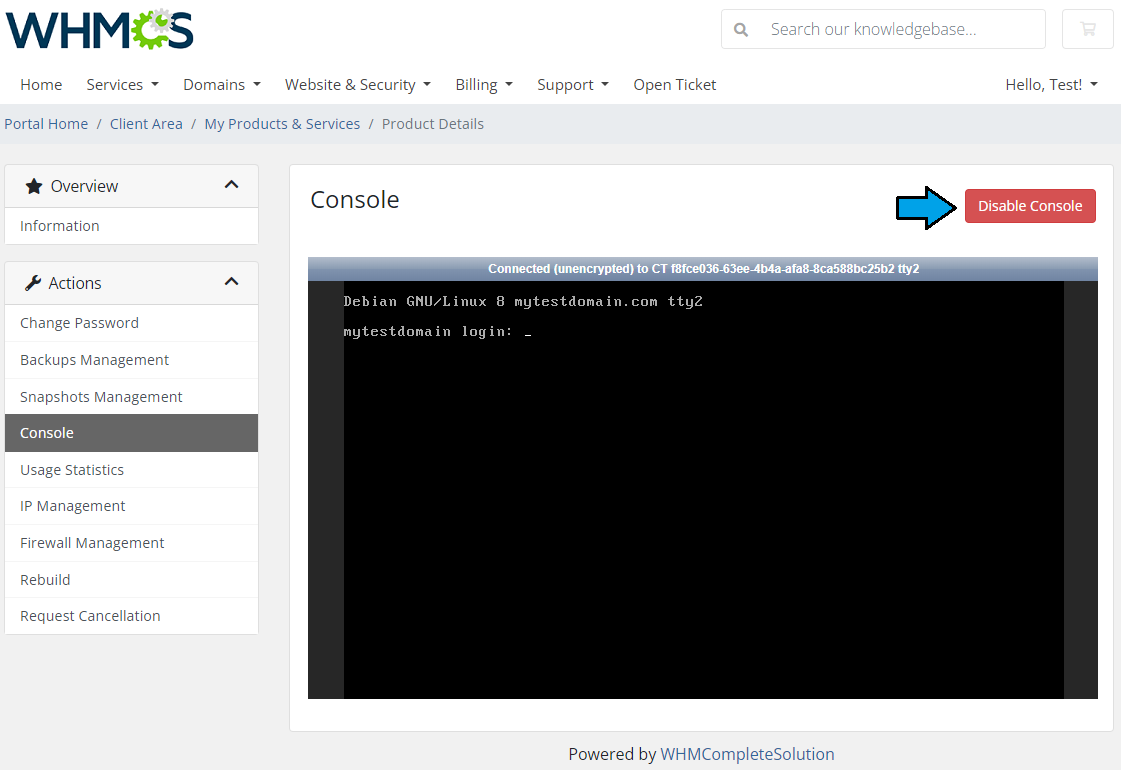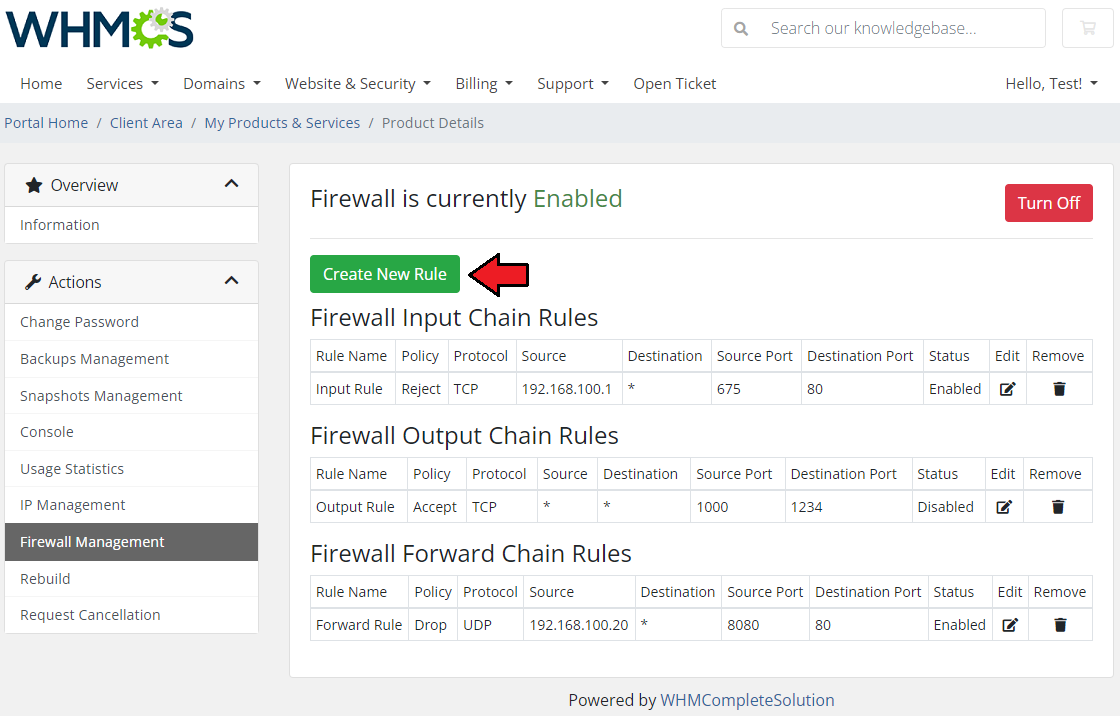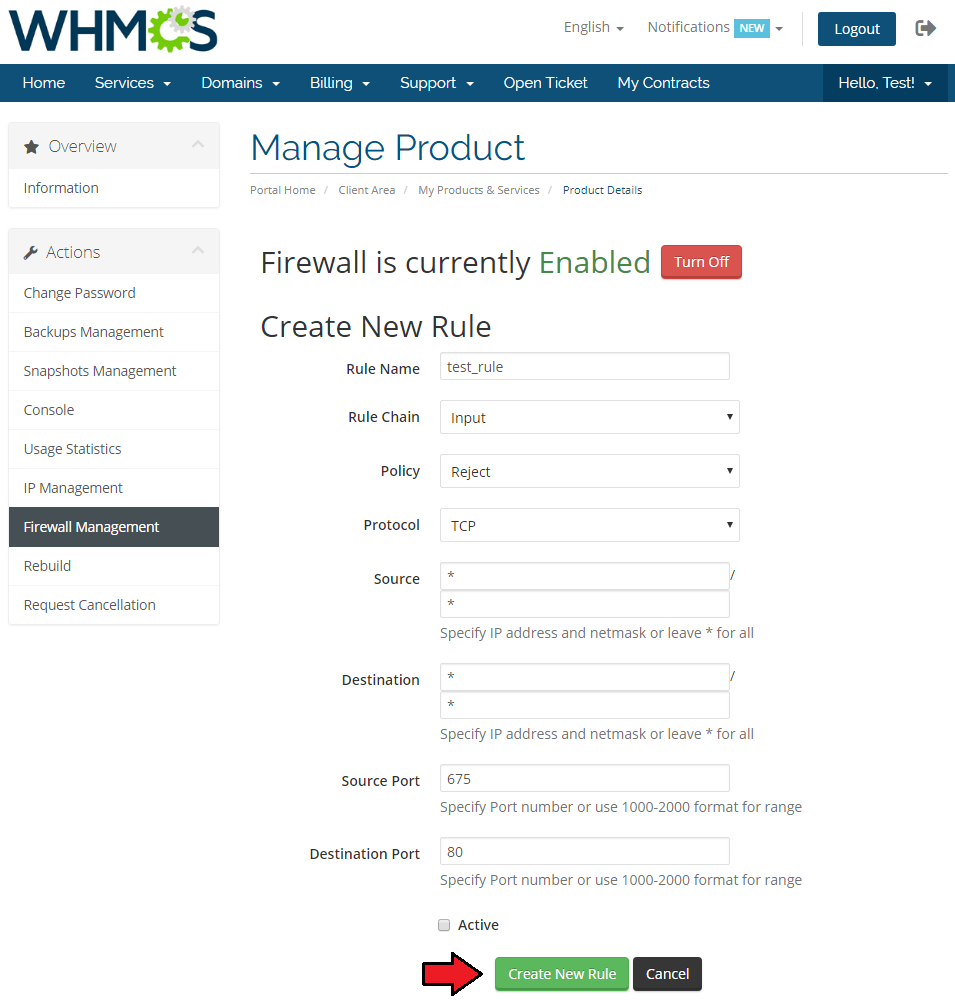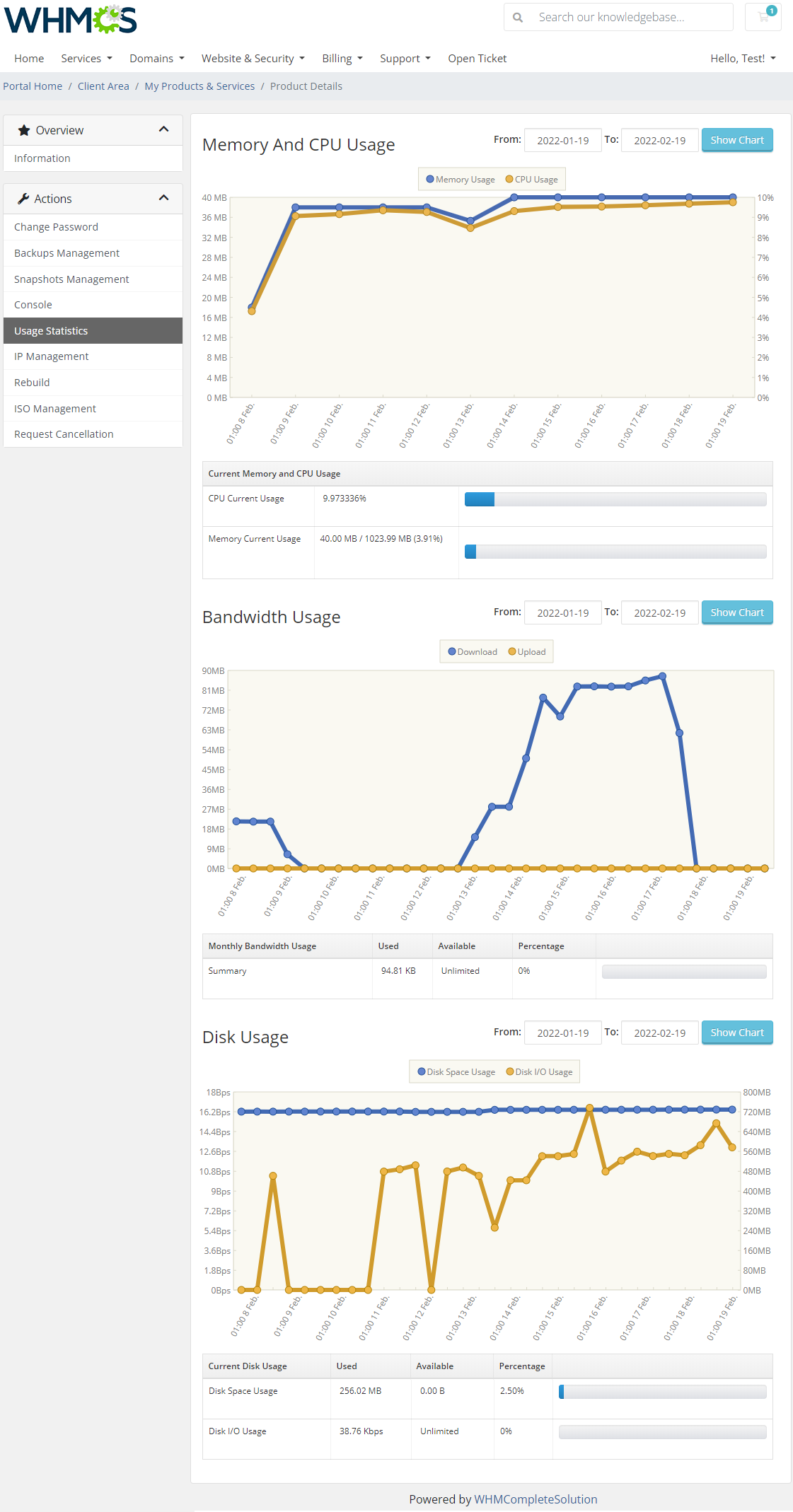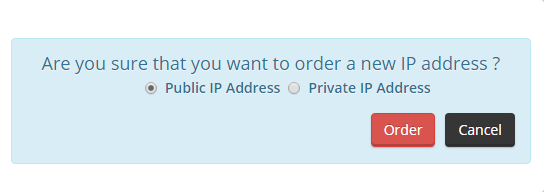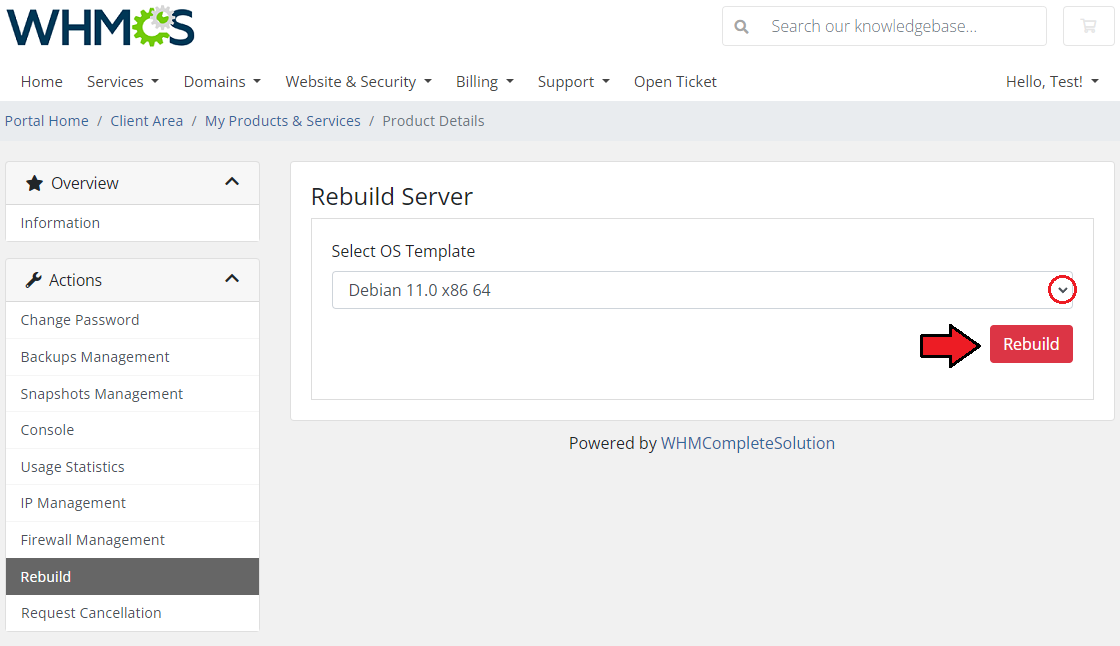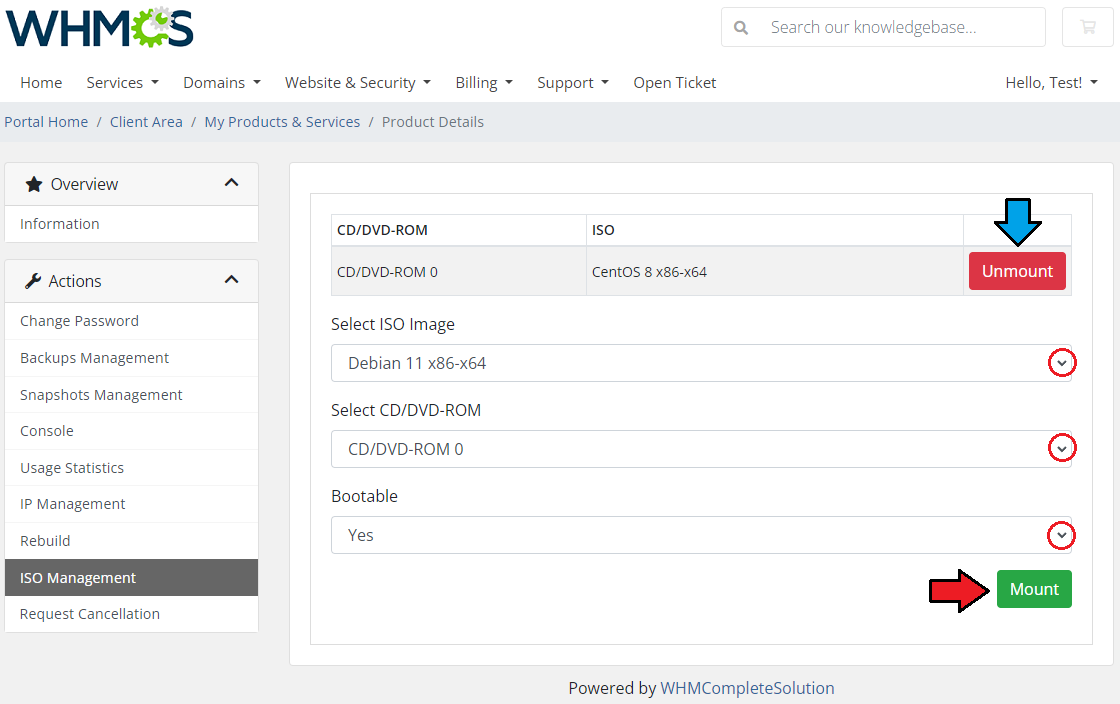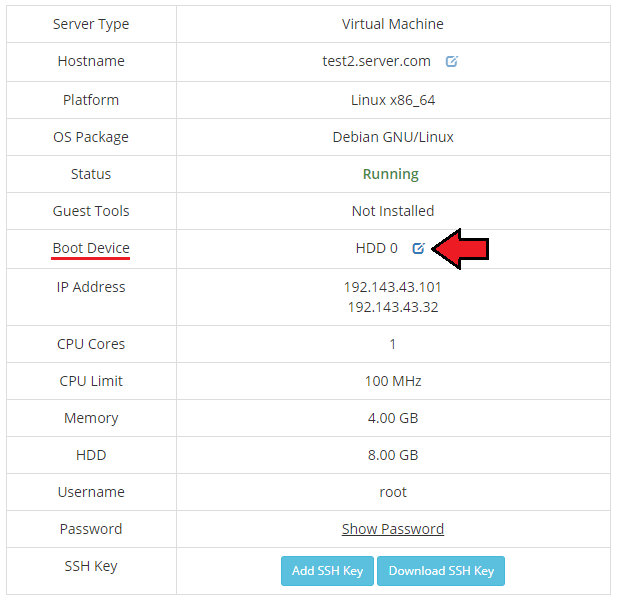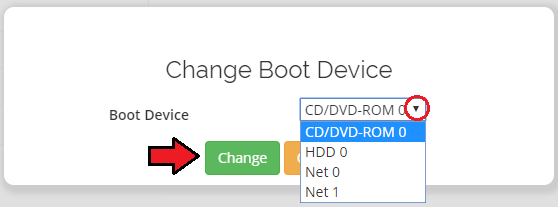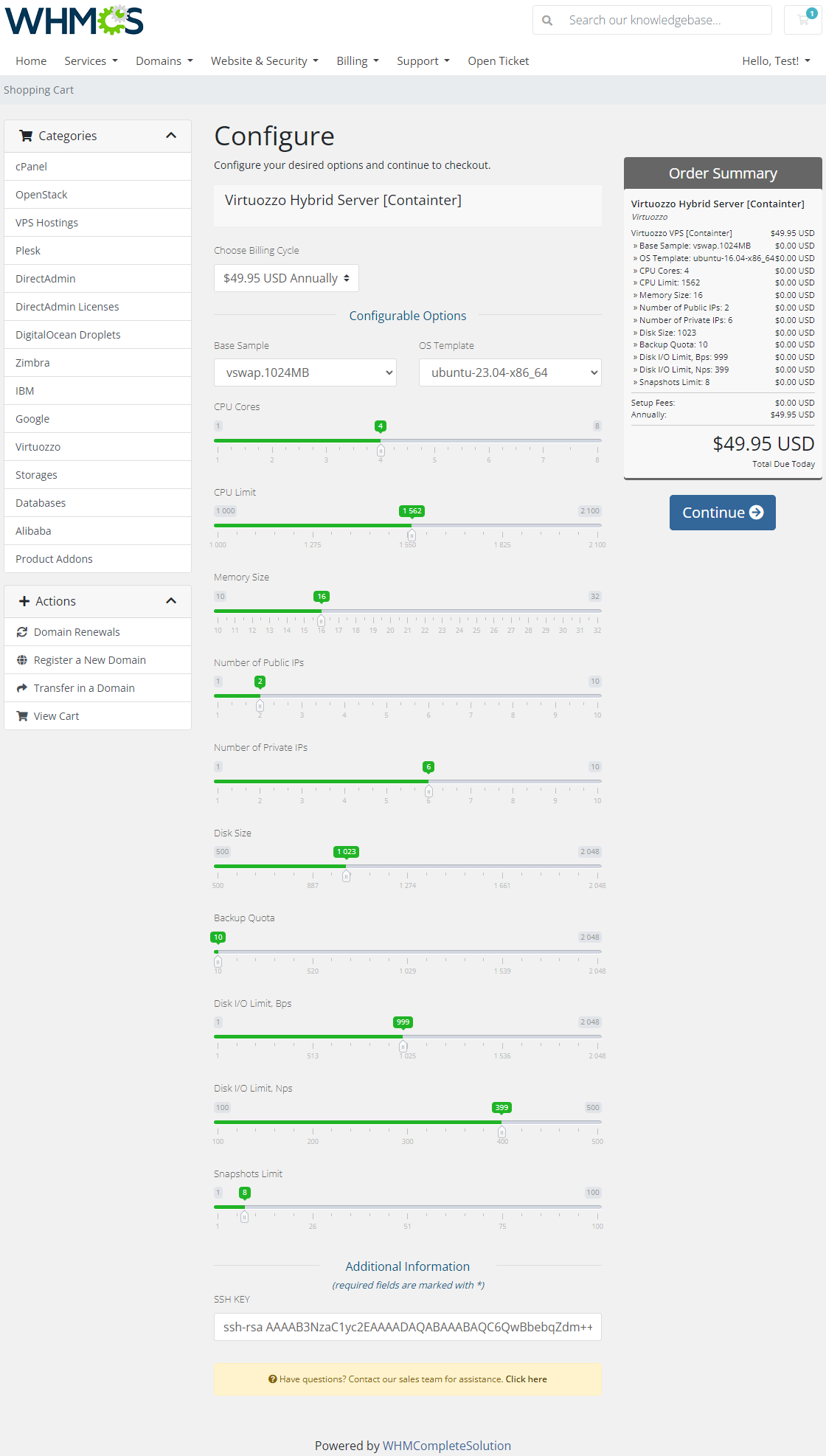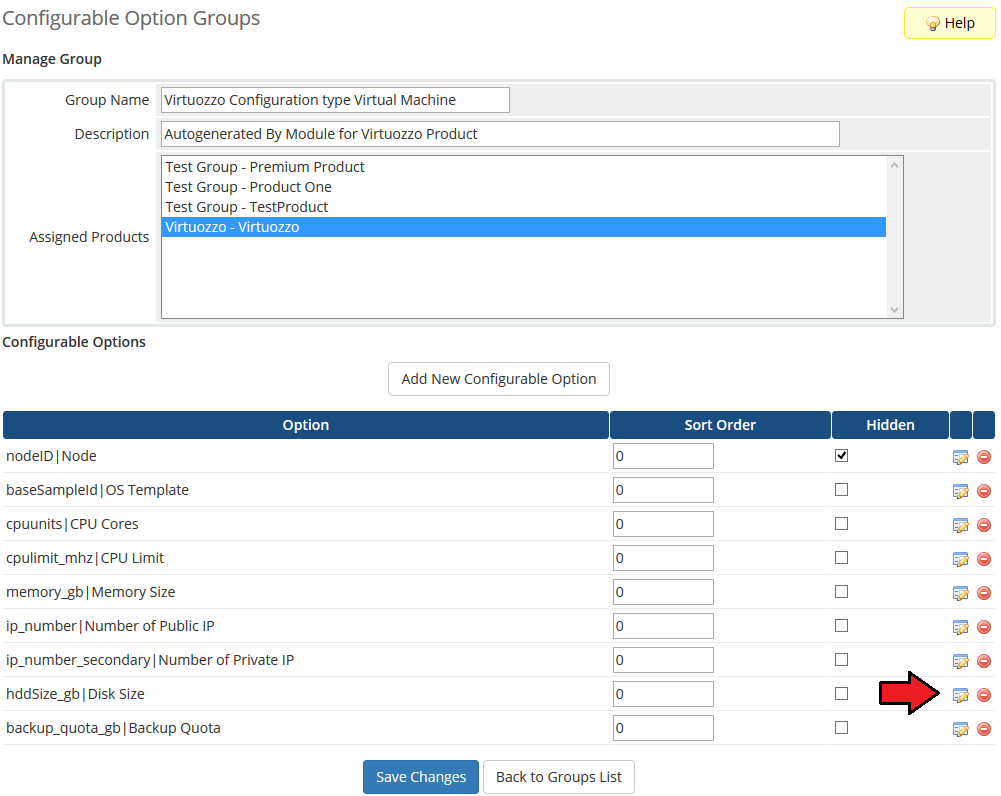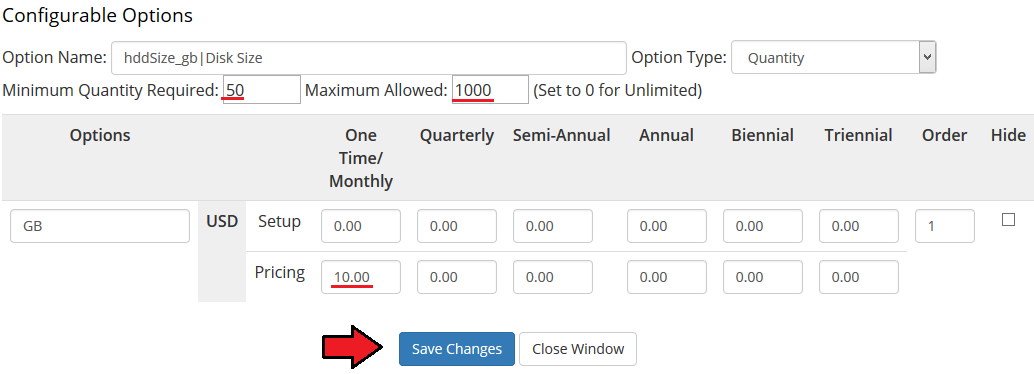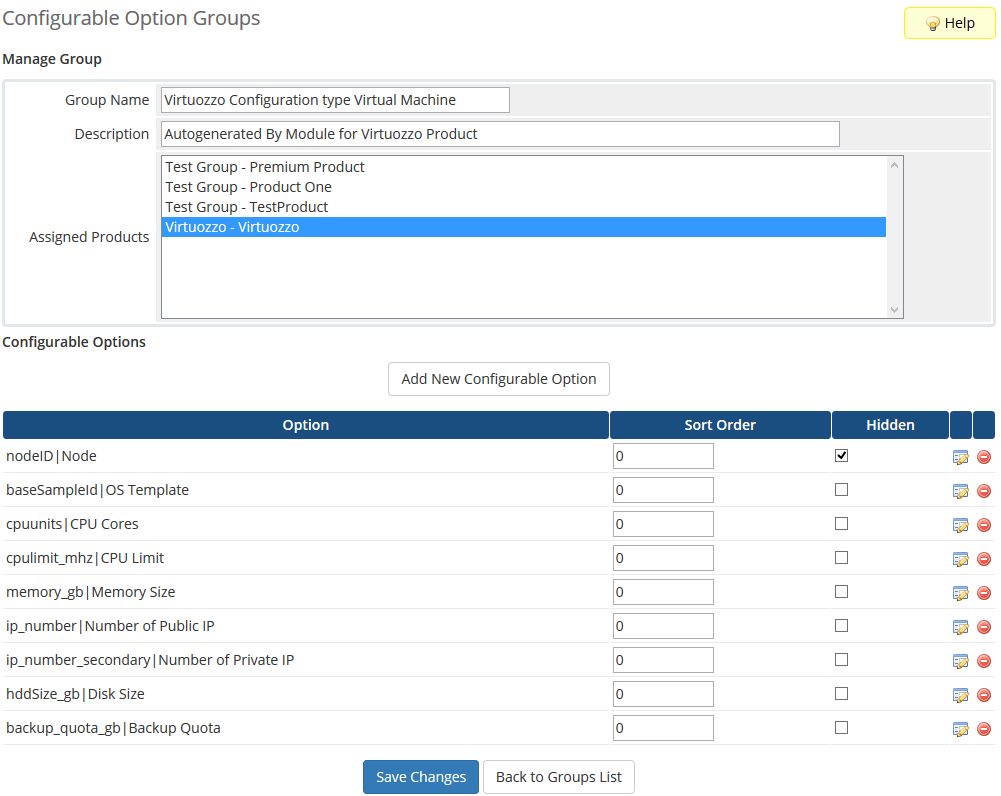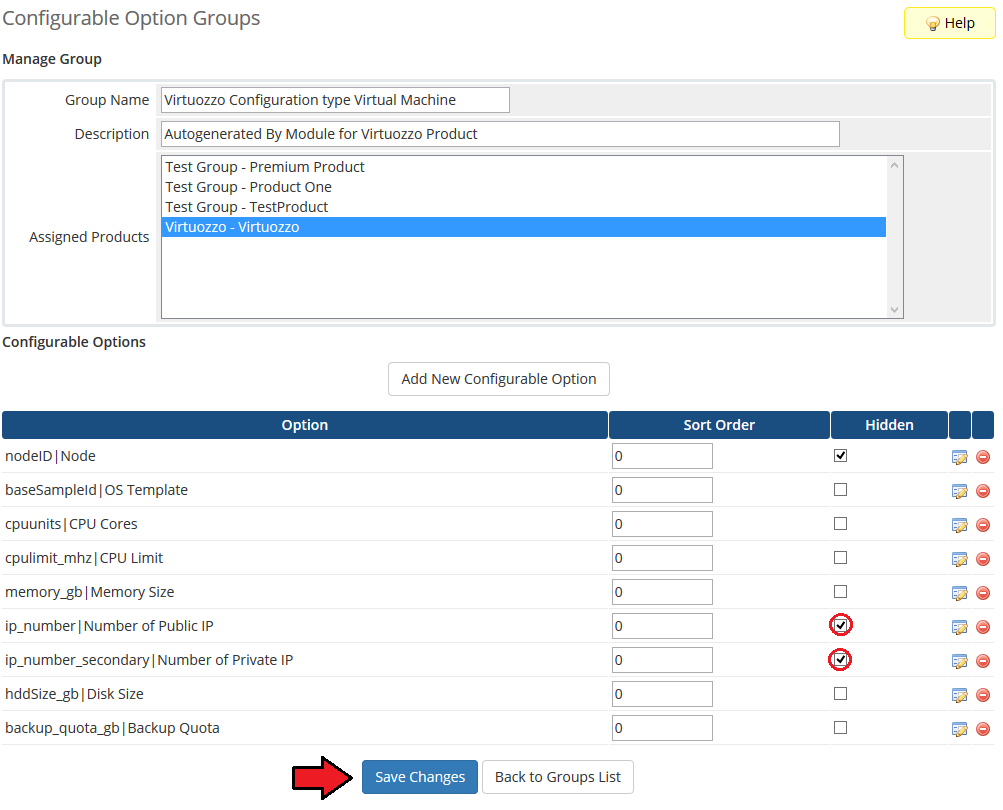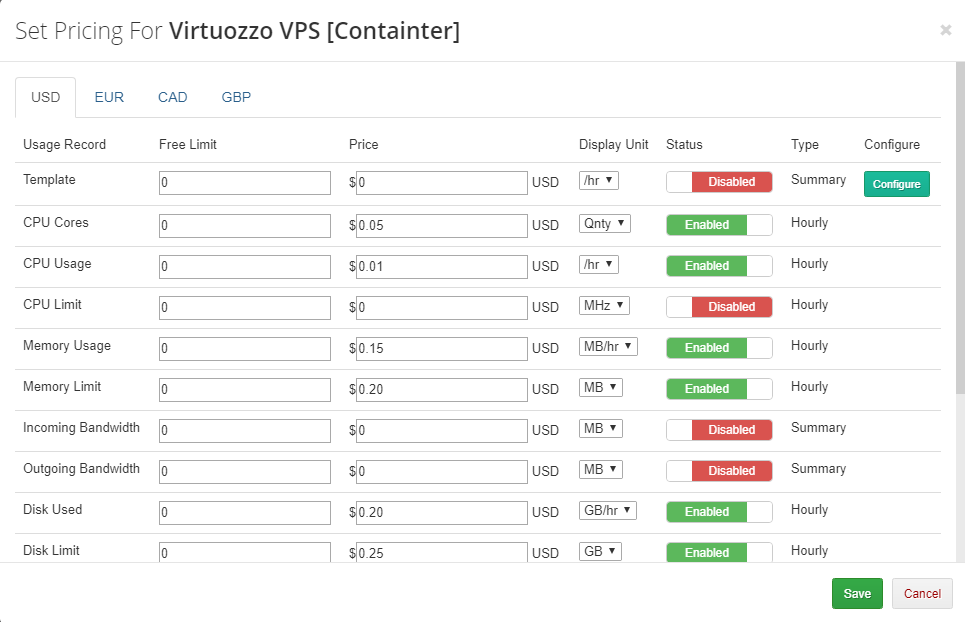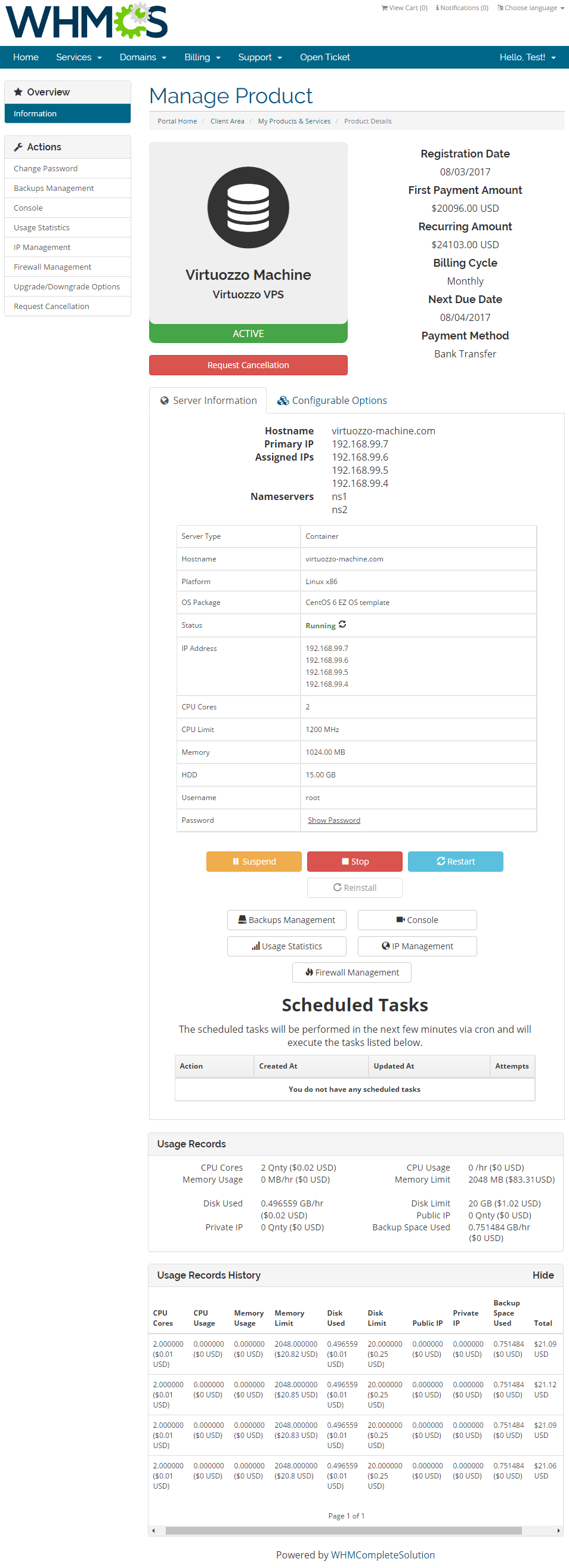Virtuozzo Hybrid Server For WHMCS
From ModulesGarden Wiki
(Difference between revisions)
|
|
| Line 2: |
Line 2: |
| | <meta name="description" content="ModulesGarden Wiki Contains All The Information You Need About The Virtuozzo VPS For WHMCS Module."></meta> | | <meta name="description" content="ModulesGarden Wiki Contains All The Information You Need About The Virtuozzo VPS For WHMCS Module."></meta> |
| | | | |
| − | =About [https://www.modulesgarden.com/products/whmcs/virtuozzo-vps Virtuozzo VPS For WHMCS]= | + | =About [https://www.modulesgarden.com/products/whmcs/virtuozzo-hybrid-server Virtuozzo Hybrid Server For WHMCS]= |
| | {| | | {| |
| − | |style="padding: 10px 0px 10px 0px;"|'''Virtuozzo VPS For WHMCS''' is a marvelous module intended for automatic provision and management of virtual servers in your WHMCS.<br /> | + | |style="padding: 10px 0px 10px 0px;"|'''Virtuozzo Hybrid Server For WHMCS''' is a marvelous module intended for automatic provision and management of virtual servers in your WHMCS.<br /> |
| | You will be able to create and provision ready products to your customers, while they will be allowed to manage their products straightforwardly in your client area.<br /> | | You will be able to create and provision ready products to your customers, while they will be allowed to manage their products straightforwardly in your client area.<br /> |
| | In addition, the module contains a Server Monitor to let you view and manage all existing virtual machines and nodes within your admin area. | | In addition, the module contains a Server Monitor to let you view and manage all existing virtual machines and nodes within your admin area. |
| Line 222: |
Line 222: |
| | |} | | |} |
| | {| | | {| |
| − | |style="padding: 0px 0px 30px 30px;"|✔ Easy Module Upgrade To [https://www.modulesgarden.com/products/whmcs/virtuozzo-vps#open-source-version Open Source Version] | + | |style="padding: 0px 0px 30px 30px;"|✔ Easy Module Upgrade To [https://www.modulesgarden.com/products/whmcs/virtuozzo-hybrid-server#open-source-version Open Source Version] |
| | |} | | |} |
| | | | |
Revision as of 12:58, 27 March 2023
Virtuozzo Hybrid Server For WHMCS is a marvelous module intended for automatic provision and management of virtual servers in your WHMCS.
You will be able to create and provision ready products to your customers, while they will be allowed to manage their products straightforwardly in your client area.
In addition, the module contains a Server Monitor to let you view and manage all existing virtual machines and nodes within your admin area.
|
| ✔ Create/Suspend/Unsuspend/Terminate Server
|
| ✔ Stop/Restart/Suspend/Reinstall Virtual Machine
|
| ✔ Migrate Server Between Nodes
|
| ✔ Change Package - Supports Configurable Options
|
| ✔ Update IP Addresses List
|
| ✔ Assign/Delete Virtual Machine By Name
|
| ✔ View Server Details And Status
|
| ✔ View And Update Assigned IP Addresses
|
| ✔ Configure Product As Virtuozzo Container Or Virtual Machine Type
|
| ✔ Configure Product Networking
|
| ✔ Configure Product Features And Limits
|
| ✔ Configure Client Area Features Per Product
|
| ✔ Select Available OS Templates To Rebuild Server
|
| ✔ Enable "Guest Tools" Installation (Virtual Machine Type Only)
|
| ✔ Automatically Enable Console After Server Creation
|
| ✔ Disable Including Unnamed Backups For Clients
|
| ✔ Enable Sending Welcome Email Template After Server Creation
|
| ✔ View Server Details And Status
|
| ✔ Start/Stop/Restart/Suspend/Resume/Reinstall Server
|
| ✔ Add And Download Public SSH Keys (Virtual Machine Type Only)
|
| ✔ Change Boot Device (Virtual Machine Type Only)
|
| ✔ Schedule/Restore/Manage Backups
|
| ✔ Create And Revert Snapshots (Virtual Machine Type Only)
|
| ✔ Enable/Disable/Access noVNC Console
|
| ✔ View And Order IP Addresses
|
| ✔ Manage Firewall Rules (Container Type Only)
|
| ✔ Rebuild Server With Selected OS Template
|
| ✔ Mount Selected ISO Images To Chosen CD/DVD-ROM (Virtual Machine Type Only)
|
| ✔ Upgrade/Downgrade Product
|
- Servers Monitor - Addon Features:
| ✔ View Nodes IP Address, Usage And Statistics
|
| ✔ View Virtual Machines List On Node
|
| ✔ Assign And Manage IP Network Configurations
|
| ✔ Setup Template Configuration
|
| ✔ Configure Network Classes Names, Rates, Total Rates And Status
|
| ✔ View Installation Steps
|
| ✔ Available Base Templates
|
| ✔ Number Of Public IP Addresses
|
| ✔ Number Of Private IP Addresses
|
| ✔ Requires Virtual Automation (PVA)
|
| ✔ Supports High Availability Function
|
| ✔ Server Resources Chosen During Order
|
| ✔ Integrated With IP Manager For WHMCS - Complete Control And Easy Assignment Of IP Subnets (read more)
|
| ✔ Integrated With Advanced Billing For WHMCS - Actual Server Resource Usage Billing (read more)
|
| ✔ Integrated With Server Allocator For WHMCS - Automatic Assignment Of Most Suitable Servers To Products (read more)
|
| ✔ Supports Virtuozzo And Virtuozzo Containers Up To Version 7
|
| ✔ Supports PHP 7.4 Up To PHP 8.1
|
| ✔ Supports WHMCS Theme "Twenty-One"
|
| ✔ Supports WHMCS V8.4 And Later
|
| ✔ Requires ionCube Loader V12 Or Later
|
Installation and Configuration
This tutorial will show you how to successfully install and configure Virtuozzo VPS For WHMCS.
We will guide you step by step through the whole installation and configuration process.
|
Installation
| 1. Log in to our client area and download the module.
|
2. In the downloaded file you might find one or two packages that support different PHP versions.
In the most recent versions of the module, you will find only one package that supports PHP 7.2 and later.
|
Previous updates of the module may contain two packages dedicated to various PHP versions.
The first one that supports PHP 5.6 up to PHP 7.1, and the second one addressed to PHP 7.2 up to PHP 7.4.
Note: Keep in mind that PHP versions 5.6 up to 7.1 are no longer officially supported and their security issues are not fixed or released any more. Find more info here.
|
| Note: You can check the current PHP version in your WHMCS. To do so, proceed to 'Utilities' → 'System' → 'PHP Info'.
|
| 3. Extract the package and upload its content into the main WHMCS directory.
The content of the package to upload should look like this.
|
4. When you install Virtuozzo VPS For WHMCS for the first time, you have to rename 'license_RENAME.php' file.
File is located in 'modules/servers/virtuozzo/license_RENAME.php'. Rename it from 'license_RENAME.php' to 'license.php'.
|
5. In order to configure your license key, you have to edit a previously renamed 'license.php' file.
Enter your license key between quotation marks as presented on the following screen.
You can find your license key in our client area → 'My Products'.
|
Activation of Virtuozzo VPS Monitor
6. Firstly, you need to activate Virtuozzo VPS addon.
To do so, log in to your WHMCS and move to 'Setup' → 'Addon Modules'. Find 'Virtuozzo' and press 'Activate'.
|
7. In the next step you need to permit access to this module.
To do so, click on 'Configure' button, tick 'Full Administrator' and press 'Save Changes' .
|
8. In order to allow module to run smoothly, go to your addon → 'Installation' tab and add two cron jobs marked on the following screen.
Suggested execution time for 'slowCron' - each 5 minutes.
Suggested execution time for 'cron' - each minute.
|
Configuration of Server
9. Now we will show you how to configure a new product.
Go to 'Setup' → 'Products/Services' → 'Servers' and press 'Add New Server' .
|
10. Next, enter your server name, IP address, username and password. Choose 'Virtuozzo' from a dropdown menu and press 'Save Changes'.
Note: Server you are using on WHMCS is in fact a node on your PVA server, not a whole PVA server.
|
| 11. It is time to create a server group, to do so click on 'Create New Group'.
|
| 12. Enter name, click on your previously created server, press 'Add' and afterwards 'Save Changes'.
|
Configuration of Product
13. In order to create and configure a product click on 'Setup' → 'Products/Services' → 'Products/Services'.
Click on 'Create a New Group' .
|
| 14. Enter product group name and press 'Save Changes'.
|
15. When you have a product group, you can create your product.
To create a product click on 'Create a New Product'.
|
16. Afterwards, fill in the below fields and press 'Continue' when ready:
- Select your product type - use 'Server/VPS Server'
- Select the product group from a dropdown menu
- Enter your product name
- Choose a module name, 'VirtuozzoVPS', from a dropdown menu
|
17. Now, go to 'Module Settings' section. As the module name has been already selected, find the server group in the dropdown menu.
Next, click on 'Save Changes'.
|
18. From dropdown menus choose 'Base Node', 'Type', 'Public Network' and 'Private Network'.
Note: 'Virtuozzo Container' server type can have only one routed network.
|
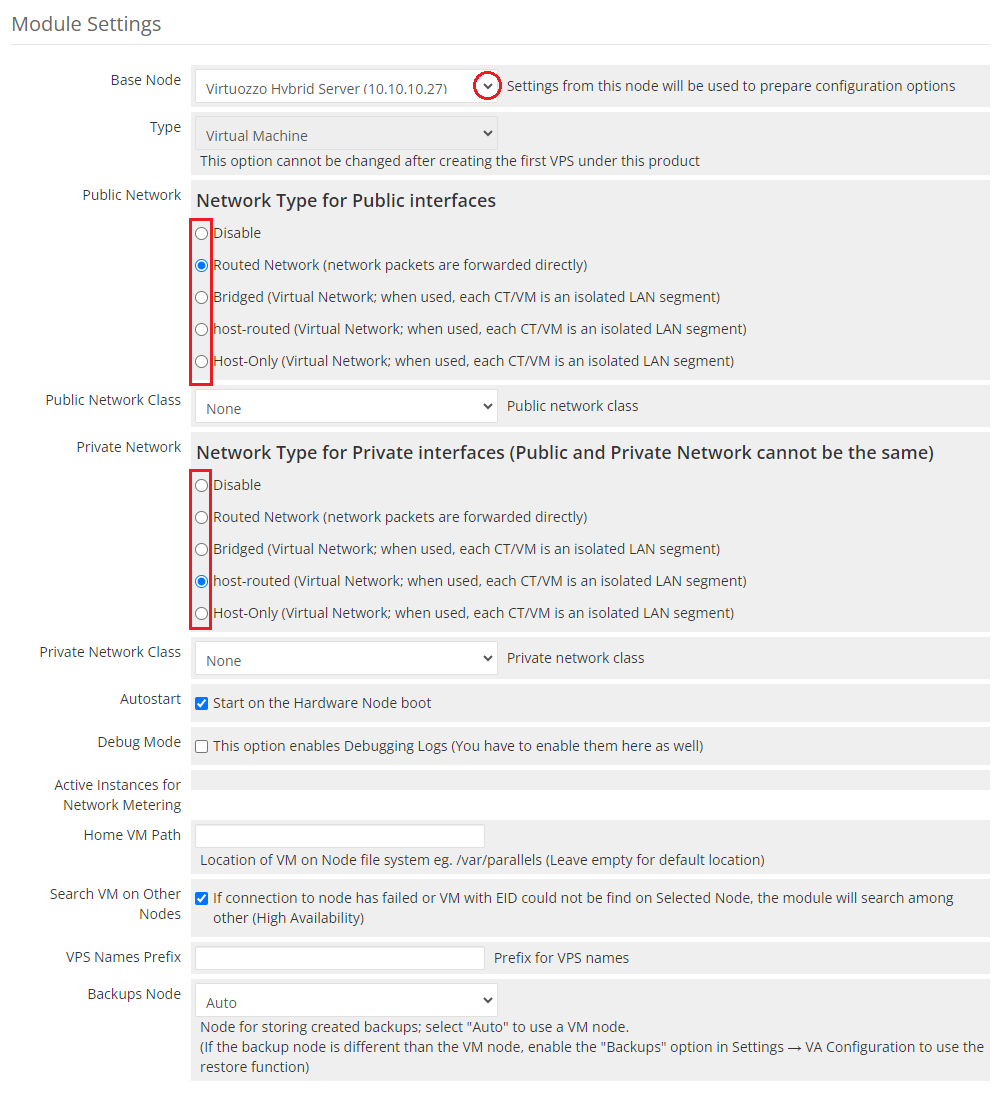
|
19. Depending on the server type that you have chosen, you may see different field names in 'Default Values' and 'Configurable Options' subsection.
On the following screen we will show you the configuration of 'Virtual Machine' server type.
If you wish to offer predefined servers to your clients, set up 'Default Values' and skip 'Configurable Options'.
In order to set up 'Default Values', choose "Base Template" from a dropdown menu. Next, enter values into textboxes marked on the screen below.
At the very bottom, you may select "Install Guest Tools" option. Guest tools will be installed into a virtual machine after its creation or reinstallation.
Eventually, select "Enable Console After Creation" option. The remote console will be automatically enabled after the product creation.
If not selected, the console will be disabled by default, but the client will still be allowed to enable it manually if access was permitted in the "Client Area Functions".
Note 1: This option requires "Install Guest Tools" to be enabled if it is used for Virtual Machine type.
Note2: Virtual machine template must have mounted CD-ROM to use guest tools.
Important: 'Guest Tools' are NOT supported if 'Container' type has been selected.
|
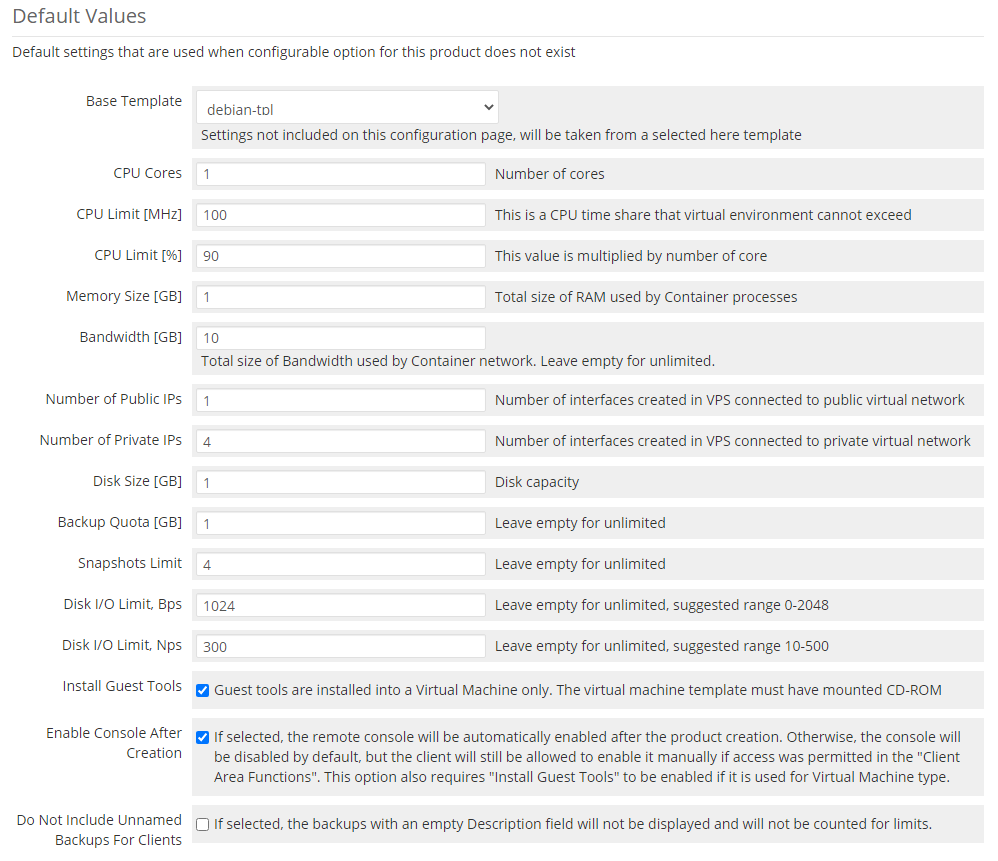
|
20. At 'Configurable Options' you can generate/update specific configurable options for product.
Firstly, mark/unmark checkboxes at 'Settings To Generate' to specify which option you want to generate in your configurable options.
Afterwards, select nodes and base templates to generate in configurable options.
At the end, confirm it through 'Generate Configurable Options' / 'Update Configurable Options'. Follow to the 'Management of Configurable Options' section to learn more.
Note: Values which will not be generated in configurable options, will be taken from 'Default Values'.
|
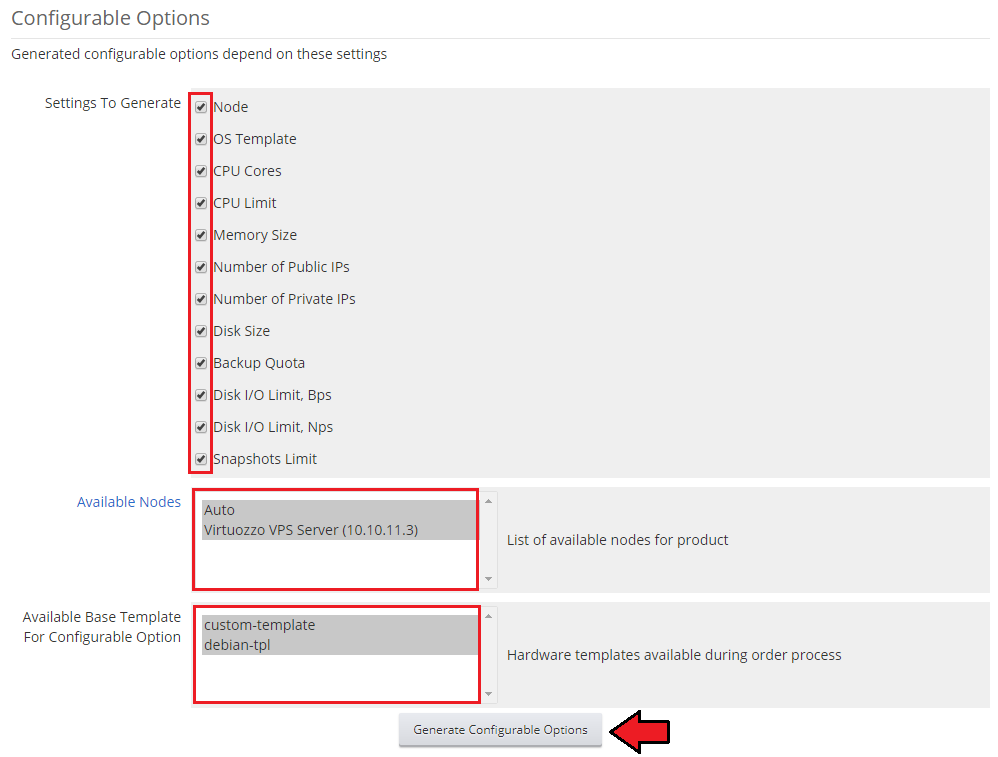
|
21. Now, it is time to define pages and functionalities visible for client in 'Client Area Configuration' subsection.
You can do it by simply selecting/unselecting checkboxes next to a page/functionality you want to enable/disable.
Here, you may also decide which of the OS templates will be available for clients to select when rebuilding the server.
Important: There are different sets of possible options to choose depending on the selected type:
SSH Keys and Snapshots options are supported by 'Virtual Machine' type only (although visible for both types).
Manage Firewall Rules is supported and visible for the 'Container' type only.
ISO Management access is provided only for the 'Virtual Machine' type.
|
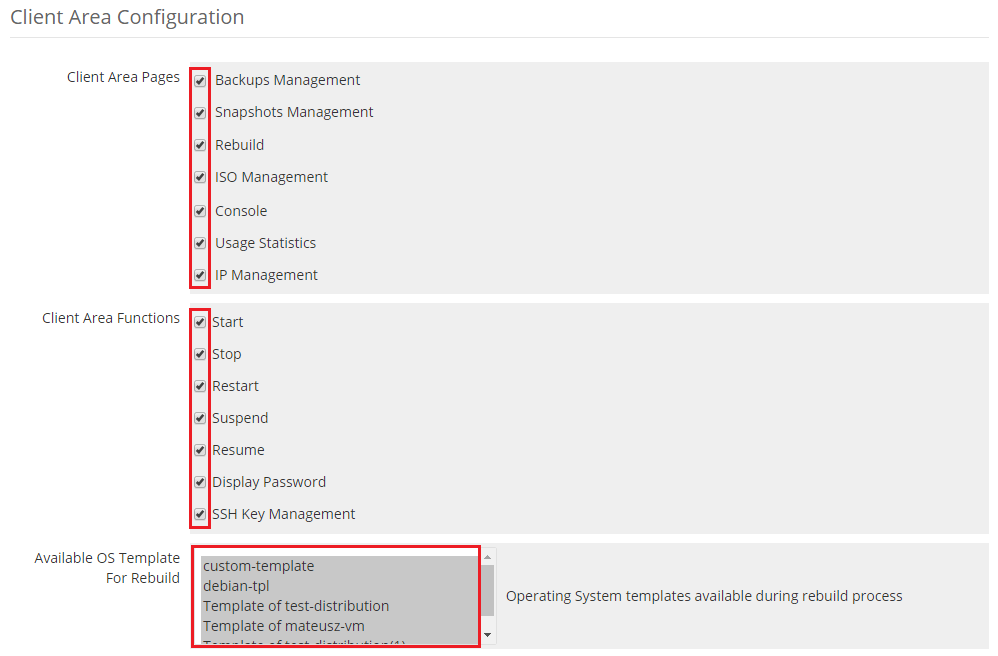
|
22. For Virtual Machines you can also specify the OS images paths that clients will be able to mount and instal using the 'ISO Management' section.
To make OS images available to customers, you must manually upload them to your local Virtuozzo server and then enter the direct paths to them.
For example, you can create '/root/images/' directory and upload to it downloaded OS images that you want to make available to your customers.
Then enter the direct paths to uploaded files in the 'Available ISO Images For Mount' area, separating them from each other with commas and a new lines.
Optionally at the end of the path, you can also add a friendly operating system name after | character, which will be displayed to the client instead of the file name.
Please note that Virtuozzo should support OS images in the following formats: .iso, .cue, .ccd, and .dmg and these images cannot be compressed and/or encrypted.
|

|
23. Send Custom Welcome Email - select this option to send a welcome email to a client only after the virtual machine is successfully created.
Please do not set up a standard welcome template email in 'Details' section not to double the messages.
If you decide to use the option to send the email after the machine has been created, not just the product, you may add to the template extra merger fields that will indicate a list of assigned IP addresses.
These are the extra merge fields that can be added to your custom or edited email template:
- Dedicated IP {$service_dedicated_ip}
- Assigned IPs {$service_assigned_ips}
Select the template from dropdown. Email notification will be sent on the virtual machine creation.
You may read more about creating templates and using merge fields in the official WHMCs documentation here.
|
Congratulations! You have just finished the installation and configuration of the module.
Your clients should see something similar to the screen below.
|
| In the admin area you can monitor and manage each of your products:
|
Management
In the following articles we will include all crucial information on how to use the addon and how to manage your products with ease.
Finally, you will find here described all the possibilities that your clients are offered to manage their virtual machines in the client area. Take a look below to learn all of that.
|
Addon
| In 'Addons' → 'Virtuozzo VPS' you can find all used virtual machines and nodes as well as instructions on how to install the module.
|
Installation
At this tab you can find instructions on how to install Virtuozzo VPS For WHMCS and configure the product.
You can also find here a link to Virtuozzo VPS For WHMCS wiki article which you are currently reading.
Make sure you have set up correctly the cron jobs, as it has been said in point number 8 of this manual.
|
Servers Monitor
| You can also view current node usage through pressing 'Usage' button, as presented on the following screen.
|
| In 'Usage' tab you can view resource usage in specific time period for node that you chose.
|
| To access virtual machines list on a particular node, press on 'Virtual Machines'.
|
'Virtual Machines' tab contains virtual machines list created on this WHMCS and node that you selected.
You can view here basic information about virtual servers.
To view more information about specific virtual machine, simply press on 'View' button.
|
| If you change your Virtuozzo server connection details, you can update connection credentials on your WHMCS through pressing 'Edit' next to altered node.
|
| Afterwards, upgrade your connection details and confirm through pressing 'Save Changes'.
|
IP Management
Our Virtuozzo VPS For WHMCS module supports management of IP addresses, but it needs IP Manager For WHMCS module to work correctly.
To access it, go to 'Addons' → 'Virtuozzo' → 'Servers Monitor' and press 'IP Management' button.
|
As you can see, you can assign different IP Manager configurations to each network type.
Let's add a new configuration to 'Host Only' network. To do so, press ' Create a new configuration for this network' button.
|
You will be moved to the IP Manager module where you can create a new configuration for Virtuozzo product.
Provide your configuration name, assign it to Virtuozzo products, addons or server and press 'Create New Configuration' .
|
Now you can add IP pool through creating a new subnet.
To do so, click 'Create New Subnet' button and follow the steps described here.
Note: It is also recommended to enable IP Manager integration module for Virtuozzo VPS. You can find instruction on how to do that here, but you do not have to assign configuration to it.
|
Successfully created IP pool can now be assign to your previously set Virtuozzo configuration.
Go back to the IP Manager configuration list and press the 'Assigned Subnets' button.
|
| Select created IP pool from the dropdown menu and press 'Assign Subnet' .
|
Once again move to the configuration list.
You will now have to assign Virtuozzo configurable options that will be used to determine the number of IP addresses from the pool assigned to the Virtuozzo product.
Note: The configurable options are required for IP addresses assignment by IP Manager.
Even if you do not want to use all configurable options for the product, you have to create and assign at least these two:
ip_number|Number of Public IP
ip_number_secondary|Number of Private IP
Click here for more information. If you already have configurable options set, press the 'Configurable Options' button to add a new relation.
|

|
Now you can add the defined Virtuozzo configurable option relations to your IP Manager.
Specify what type of address to assign to the chosen 'Network ID' : public IP, private IP or both as a shared address.
Important: If you decide to assign both public and private configurable options, as shown below, then you will also have to assign that configuration to the second network interface (if used).
|
| Finally, go back to the Virtuozzo addon and assign the created configuration to the chosen network interface.
|
Congratulations, you have successfully completed the IP Manager configuration!
Repeat the above steps for the second configuration in the same manner, or use the already created configuration to use shared IP pool.
|
Management of Admin Area
In the admin area you can execute basic commands(2) as 'Create' , 'Suspend' , 'Unsuspend' , 'Terminate' and 'Change Package'.
You can also order 'Server Actions' (3) such as 'Stop' , 'Restart' , 'Suspend' , 'Start' , 'Reinstall' , 'Resume' and 'Migrate'.
You are able to view configurable options(1), server details(4), assigned IP addresses(5), scheduled cron tasks(6), host ID(7) and SSH Key(8).
Note: 'Basic Template' cannot be changed if product was already created. 'Node' can be changed only using 'Migrate' and 'OS Template' through using 'Reinstall'.
|
Reinstall
| To reinstall your virtual server you have to stop it through pressing 'Stop' button.
Note: You are not able to reinstall 'Virtual Machine' server type.
|
| Afterwards, press 'Reinstall' button.
|
Migrate
To migrate your virtual machine, choose server you want to migrate your virtual machine to.
Afterwards, select node on this server from a 'Node' configurable option and press 'Save Changes' button.
The last step is pressing 'Migrate Button'.
Note: To migrate your virtual server you have to generate 'Node' configurable option.
|
| Afterwards, popup should appear. Confirm migration through clicking 'Migrate' button.
|
Management of Client Area
Client area interface of Virtuozzo VPS should look like the one on the screen below.
As you can see, control panel contains useful options needed to manage a VPS.
Module allows your customers to easily 'Suspend' (1), 'Stop' (2), 'Restart' (3) their servers through pressing a specific button.
It is also available to 'Start' , 'Reinstall' (4) and 'Resume' server by clicking on defined buttons.
'Start' and 'Reinstall' actions are available only when server is down, 'Resume' is available when server is suspended.
|
SSH Management
SSH Key management is available for 'Virtual Machine' type and only if 'Guest Tools' are installed.
Add SSH Key to use it as authentication step when connecting to the server.<
You may do that on the product page by pressing 'Add SSH' button marked on the screen below.
|
| A new window will appear, paste your public SSH key, use the OpenSSH format.
|
You may also download and check your SSH Key, just press the adequate button and the file will be downloaded.
Important: Adding and downloading SSH keys is supported only if guest tools are installed on the virtual machine.
|
There are two ways to add an SSH key. You may do that already when placing an order, by filling in an adequate configurable option field.
Take a look at the screen below:
|
Backups Management
In 'Backups Management' you can order backup jobs or create backups.
To create backup job press 'Create Backup Schedule' as shown on the screen below.
Note: If two backup tasks are ordered in a small time interval, only one backup is created.
|
Now define backup description by typing its name into a textbox and choose backup type from a dropdown menu.
You can choose whether to delete previous backup or not, through marking checkbox next to 'Remove Previous'.
Afterwards, select 'Recurrence Pattern' through marking desired option and set time of run.
On the screen below you can view sample setting for 'Repeat Weekly' option.
To create this backup job, press 'Schedule Backup' button.
|
| You can also create a single backup. To do so, click on 'Create Backup' button as shown on the following screen.
|
Now enter backup description and select backup type from a dropdown menu.
Afterwards, choose whether to delete previous backup or not, through marking checkbox next to 'Remove Previous'.
Confirm creation of this backup through pressing 'Create Backup' button.
|
To restore a backup, simply press restore icon and then confirm the action.
Important: Along with the decision to restore a backup of your virtual machine, you accept to delete all the created snapshots of your virtual machine.
|
Snapshots Management
'Snapshots Management' section allows you to create single snapshots of the current virtual machine look and condition.
To create a snapshot simply press 'Create Snapshot' button.
|
| Name the snapshot and confirm the action.
|
Creating a snapshot might last a few minutes. Please wait until the next cron run to see it on the list of current snapshots.
When the snapshot is ready, you will see it on the list with information on its creation date, size and options to revert the snapshot or delete it.
|
| To revert a snapshot simply press adequate button. The virtual machine snapshot will be reverted to real environment.
|
Console
One of the most interesting functionalities is noVNC console (which uses HTML5) where your clients can remotely manage server.
To access it, simply press on the 'Console' button. A new window will be opened, so make sure your browser does not block it.
You may also disable the console od enable it back again whenever needed. Simply, press the 'Disable/Enable Console' button.
Note: If the noVNC console does not work, make sure that it has been enabled in your Virtuozzo panel. There you can also test if it works properly.
|
Important: If your WHMCS instance uses 'HTTPS' protocol, then your Virtuozzo host must use 'HTTPS' as well.
In order to establish connection between Virtuozzo and your WHMCS, run the below command on Virtuozzo server:
prlsrvctl set --vnc-ssl-certificate /PathToCert/certificate.crt --vnc-ssl-key /PathToKey/private.key
Remember that the used here certificate must be generated for the used by Virtuozzo host.
|
Firewall Management
Under 'Firewall Management' section the client can set up firewall for their virtual server.
They can 'Enable' / 'Disable' firewall, add new firewall rules, view existing rules list and manage existing rules.
Important: 'Firewall Management' is available only for 'Virtuozzo Container' server type.
Press 'Create New Rule' to add a new one.
|
Now, enter all the required data to set up a valid firewall rule.
- Define a rule chain: 'Input', 'Output' or 'Forward'
- Define the rule policy
- Select protocol
- Provide source and destination: specify IP address and netmask or leave empty to enable for all
- Define source and destination ports - specify ports or enter a port range
|
Usage Statistics
At 'Usage Statistics' your clients can view information about resource used by the virtual server.
There can be found resource usage and graphs of CPU, memory, bandwidth and disk.
|
IP Management
Here your clients can find all IP addresses assigned to their virtual server.
To order new IP addresses, press 'Order New IP'.
Note 1: To order a new IP you have to generate configurable options for 'Number of Public IP' and 'Number of Private IP'.
Depending on generated configurable options, your client will be able to order public IP, private IP or both.
Note 2: You can hide these configurable options from the order form. You can find instruction here.
|
| Popup will appear, select IP address type and press 'Order'.
|
Rebuild Server
| Here you can rebuild your server. Select one of the available OS templates and press the 'Rebuild' button.
|
| A popup will appear, confirm if you are sure to rebuild the server.
|
ISO Management
If you have given your customers access to the ISO Management section, they will be able to see which image is currently mounted on their Virtual Machine.
Note: This section is available only for the Virtual Machine type.
Clients can unmount the currently used image from here as well as mount other images which paths you provided in the configuration of product.
When mounting, you can make the image bootable and decide to which CD/DVD-ROM it should be mounted, if more than one is available.
Please note that images can only be mounted if the virtual machine is stopped.
|
| After mounting the image, please remember that in order to use it during the boot of virtual machine, you also need to change the 'Boot Device' in the server details to the CD/DVD-ROM in which the image is mounted.
|
| The boot device, in addition to available CD/DVD-ROM devices, can also be selected as HDD disks or network interfaces.
|
Management of Configurable Options
| When you successfully set up a product, your client can order it by choosing amount of resources from default configurable options.
|
Editing Configurable Options
In case these options don't suit your needs, you can edit them.
To do so, go to 'Setup' → 'Products/Services' → 'Configurable Option' .
Afterwards, press edit button next to configurable option used by your product (its name is 'Configurable options for your_product_name' ).
|
Here you can view all products this configurable option group is assigned to.
Now, let us show you how to edit options. Let’s say you want to add an option to order VPS with 1000 GB disk.
To do so, edit 'hddSize_gb|Disk Size in GB' by pressing edit button as shown on the screen below.
|
You will see a popup window, so make sure your browser will not block it.
Edit 'Maximum Allowed' textbox as shown on the following screen.
Afterwards, press 'Save Changes'.
|
Here is a list of all available configurable options for Virtuozzo VPS products:
- baseSampleIdVirtuozzo|Base Sample
- ip_number|Number of Public IPs
- ip_number_secondary|Number of Private IPs
- backup_quota_gb|Backup Quota
- io_limit_mb|Disk I/O Limit, Bps
- iops_limit|Disk I/O Limit, Nps
- snapshots_limit|Snapshots Limit
|
Hiding Configurable Options
If you decide to hide configurable options from a client order form, follow steps below.
Firstly, go to 'Setup' → 'Products/Services' → 'Configurable Option'.
|
Afterwards, tick 'Hidden' checkboxes next to configurable options you want to hide.
On the screen below you can see hiding of 'Number of Public IP' and 'Number of Private IP'.
|
Management of Billing
When you combine Virtuozzo VPS For WHMCS with Advanced Billing For WHMCS, you will be able to set up additional billing options.
Module allows you to charge your customers based on the server resources used by them.
Note: To set price for specific template you need to have it assigned to product configurable options.
|
| With Advanced Billing module, you can also display your customers the current server resource usage and their cost.
|
Management of Existing Accounts
You can easily use Virtuozzo VPS For WHMCS module with your existing Virtuozzo accounts. To do so, follow the instructions below:
1. Create and configure a Virtuozzo server and a server group.
2. Create and configure a Virtuozzo product. Product configuration should be the same as virtual machine you want to connect to Virtuozzo VPS module.
3. Place new order with previously created product for your customer (it is important to use same hostname as VM you want to use). Do not activate product yet.
4. Go to 'Products/Services' section of freshly created product and press 'Assign VM by Name' , this will only connect VM by UUID, and get IP addresses list.
6. Set product status to 'Active' .
Remember to not click 'Create' button during the entire process. That would unnecessarily create a new virtual machine.
If you decide to remove VM and you do not want to configure it on WHMCS system, create product with its hostname and use 'Delete VM by Name' .
Use 'Delete VM by Name' button with care.
Both 'Assign VM by Name' and 'Delete VM by Name' can be found in admin area of uncreated Virtuozzo VPS product.
|
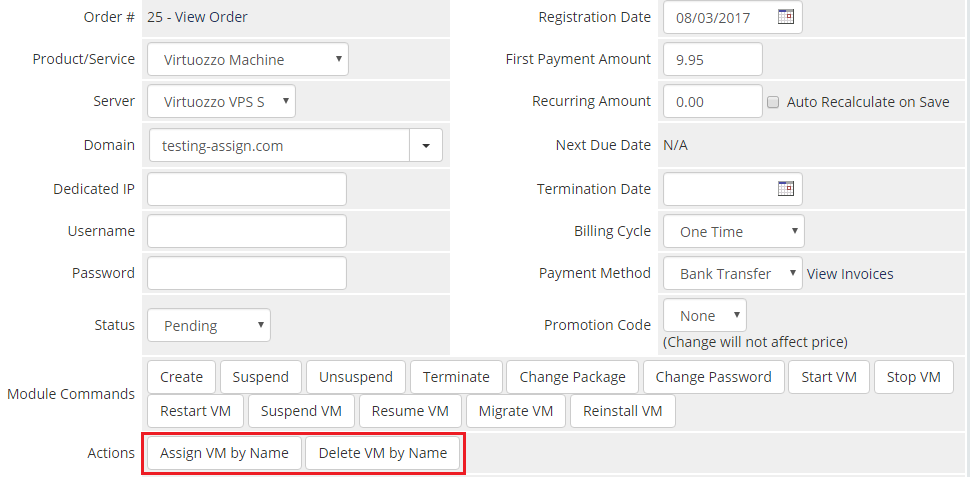
|
Tips
1. Operations performed on the virtual servers are not executed immediately.
Give your Virtuozzo servers some time for processing the request and execution of operation.
|
| 2. To change password, OS on VM has to finish a boot sequence. Password is changed when ready status is detected by cron.
|
3. You can also check if your server connection is configured correctly.
Go to 'Setup' → 'Product/Services' → 'Servers' and press 'Test Connection' button next to your server.
|
Update Instructions
Essential guidance through the process of updating the module is offered here.
Keep in mind there is a quick and easy option in our client area that will let you upgrade the license of your module to an open source version at any time - and at a lower price!
To take advantage of it, simply use the License Upgrade button located on the product's page and a discounted invoice will be generated automatically.
|
How To Update
1. If you switch from Parallels Cloud Server to newer version of Virtuozzo VPS, follow the below steps.
Firstly, download the latest version from your client area.
|
2. In the downloaded file you might find one or two packages that support different PHP versions.
In the most recent versions of the module, you will find only one package that supports PHP 7.1 and later.
If you need a package for the previous versions of PHP, please contact our support.
|
Previous updates of the module may contain two packages dedicated to various PHP versions.
The first one that supports PHP 5.6 up to PHP 7.0, and the second one addressed to PHP 7.1 up to PHP 7.3.
Note: Keep in mind that PHP versions 5.6 up to 7.0 are no longer officially supported and their security issues are not fixed or released any more. Find more info here.
|
Important: This situation does not affect the open source version of this module which can be applied to any PHP from version 5.6 and later.
Note: You can check the current PHP version in your WHMCS. To do so, proceed to 'Utilities' → 'System' → 'PHP Info'.
|
3. Once you have chosen the package with the right PHP version, extract it and upload its content into the main WHMCS directory.
The content of the chosen PHP version files to upload should look like this.
|
| 4. Then you need to update server settings in 'Products/Services' → 'Servers'. Find more here
|
| 5. Finally, update your product details. To do so, move to 'Products/Services' → 'Products/Services'. Find details here.
|
6. If you are updating from Parallels Cloud Server 1.0.5 or older, you have to make additional changes.
Update configurable options of product using Virtuozzo VPS module.
Update ordered product using Virtuozzo VPS module.
|
| Your module and products have been just successfully updated, good job!
|
Common Problems
| 1. When you have problems with connection, check whether your SELinux or firewall does not block ports.
|
2. It can happen that at your 'Module Settings' tab you can get loading gray screen.
Do not worry, it can take a while to download available settings from your PVA server.
But if loading takes too long, check if your server connection credential is set correctly.
Remember, use connection credential to PVA server node, not PVA server itself.
|
3. When you see message shown on the screen below, it means that you have not installed IP Manager For WHMCS.
This module is needed to manage your IP addresses from Virtuozzo VPS addon, and can be downloaded from here.
|
| 4. It is not advised to use Parallels Cloud Server For WHMCS module with Virtuozzo VPS For WHMCS at the same time.
|
5. If you are getting an error like this one:
SQLSTATE[42S02]: Base table or view not found: 1146 Table 'username.pcsNetworkClassConf' doesn't exist.
when configuring product's module settings, make sure that the Virtuozzo addon has been enabled.
|
6. You may encounter a problem with the scheduled backup task that may have initiated successfully, but got stuck on the "Current in progress" status with 0 attempts.
In that case, we recommend that you increase the 'wait_timeout' parameter in your MySQL configuration from the default 300 to at least 3600.
|
|
